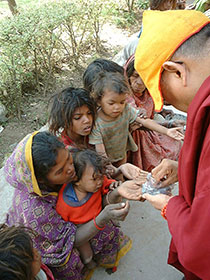- Home
- FPMT Homepage
Foundation for the Preservation of the Mahayana Tradition
The FPMT is an organization devoted to preserving and spreading Mahayana Buddhism worldwide by creating opportunities to listen, reflect, meditate, practice and actualize the unmistaken teachings of the Buddha and based on that experience spreading the Dharma to sentient beings. We provide integrated education through which people’s minds and hearts can be transformed into their highest potential for the benefit of others, inspired by an attitude of universal responsibility and service. We are committed to creating harmonious environments and helping all beings develop their full potential of infinite wisdom and compassion. Our organization is based on the Buddhist tradition of Lama Tsongkhapa of Tibet as taught to us by our founders Lama Thubten Yeshe and Lama Thubten Zopa Rinpoche.
- Willkommen
Die Stiftung zur Erhaltung der Mahayana Tradition (FPMT) ist eine Organisation, die sich weltweit für die Erhaltung und Verbreitung des Mahayana-Buddhismus einsetzt, indem sie Möglichkeiten schafft, den makellosen Lehren des Buddha zuzuhören, über sie zur reflektieren und zu meditieren und auf der Grundlage dieser Erfahrung das Dharma unter den Lebewesen zu verbreiten.
Wir bieten integrierte Schulungswege an, durch denen der Geist und das Herz der Menschen in ihr höchstes Potential verwandelt werden zum Wohl der anderen – inspiriert durch eine Haltung der universellen Verantwortung und dem Wunsch zu dienen. Wir haben uns verpflichtet, harmonische Umgebungen zu schaffen und allen Wesen zu helfen, ihr volles Potenzial unendlicher Weisheit und grenzenlosen Mitgefühls zu verwirklichen.
Unsere Organisation basiert auf der buddhistischen Tradition von Lama Tsongkhapa von Tibet, so wie sie uns von unseren Gründern Lama Thubten Yeshe und Lama Thubten Zopa Rinpoche gelehrt wird.
- Bienvenidos
La Fundación para la preservación de la tradición Mahayana (FPMT) es una organización que se dedica a preservar y difundir el budismo Mahayana en todo el mundo, creando oportunidades para escuchar, reflexionar, meditar, practicar y actualizar las enseñanzas inconfundibles de Buda y en base a esa experiencia difundir el Dharma a los seres.
Proporcionamos una educación integrada a través de la cual las mentes y los corazones de las personas se pueden transformar en su mayor potencial para el beneficio de los demás, inspirados por una actitud de responsabilidad y servicio universales. Estamos comprometidos a crear ambientes armoniosos y ayudar a todos los seres a desarrollar todo su potencial de infinita sabiduría y compasión.
Nuestra organización se basa en la tradición budista de Lama Tsongkhapa del Tíbet como nos lo enseñaron nuestros fundadores Lama Thubten Yeshe y Lama Zopa Rinpoche.
A continuación puede ver una lista de los centros y sus páginas web en su lengua preferida.
- Bienvenue
L’organisation de la FPMT a pour vocation la préservation et la diffusion du bouddhisme du mahayana dans le monde entier. Elle offre l’opportunité d’écouter, de réfléchir, de méditer, de pratiquer et de réaliser les enseignements excellents du Bouddha, pour ensuite transmettre le Dharma à tous les êtres. Nous proposons une formation intégrée grâce à laquelle le cœur et l’esprit de chacun peuvent accomplir leur potentiel le plus élevé pour le bien d’autrui, inspirés par le sens du service et une responsabilité universelle. Nous nous engageons à créer un environnement harmonieux et à aider tous les êtres à épanouir leur potentiel illimité de compassion et de sagesse. Notre organisation s’appuie sur la tradition guéloukpa de Lama Tsongkhapa du Tibet, telle qu’elle a été enseignée par nos fondateurs Lama Thoubtèn Yéshé et Lama Zopa Rinpoché.
Visitez le site de notre Editions Mahayana pour les traductions, conseils et nouvelles du Bureau international en français.
Voici une liste de centres et de leurs sites dans votre langue préférée
- Benvenuto
L’FPMT è un organizzazione il cui scopo è preservare e diffondere il Buddhismo Mahayana nel mondo, creando occasioni di ascolto, riflessione, meditazione e pratica dei perfetti insegnamenti del Buddha, al fine di attualizzare e diffondere il Dharma fra tutti gli esseri senzienti.
Offriamo un’educazione integrata, che può trasformare la mente e i cuori delle persone nel loro massimo potenziale, per il beneficio di tutti gli esseri, ispirati da un’attitudine di responsabilità universale e di servizio.
Il nostro obiettivo è quello di creare contesti armoniosi e aiutare tutti gli esseri a sviluppare in modo completo le proprie potenzialità di infinita saggezza e compassione.
La nostra organizzazione si basa sulla tradizione buddhista di Lama Tsongkhapa del Tibet, così come ci è stata insegnata dai nostri fondatori Lama Thubten Yeshe e Lama Zopa Rinpoche.
Di seguito potete trovare un elenco dei centri e dei loro siti nella lingua da voi prescelta.
- 欢迎 / 歡迎
简体中文
“护持大乘法脉基金会”( 英文简称:FPMT。全名:Foundation for the Preservation of the Mahayana Tradition) 是一个致力于护持和弘扬大乘佛法的国际佛教组织。我们提供听闻,思维,禅修,修行和实证佛陀无误教法的机会,以便让一切众生都能够享受佛法的指引和滋润。
我们全力创造和谐融洽的环境, 为人们提供解行并重的完整佛法教育,以便启发内在的环宇悲心及责任心,并开发内心所蕴藏的巨大潜能 — 无限的智慧与悲心 — 以便利益和服务一切有情。
FPMT的创办人是图腾耶喜喇嘛和喇嘛梭巴仁波切。我们所修习的是由两位上师所教导的,西藏喀巴大师的佛法传承。
繁體中文
護持大乘法脈基金會”( 英文簡稱:FPMT。全名:Found
ation for the Preservation of the Mahayana Tradition ) 是一個致力於護持和弘揚大乘佛法的國際佛教組織。我們提供聽聞, 思維,禪修,修行和實證佛陀無誤教法的機會,以便讓一切眾生都能 夠享受佛法的指引和滋潤。 我們全力創造和諧融洽的環境,
為人們提供解行並重的完整佛法教育,以便啟發內在的環宇悲心及責 任心,並開發內心所蘊藏的巨大潛能 — 無限的智慧與悲心 – – 以便利益和服務一切有情。 FPMT的創辦人是圖騰耶喜喇嘛和喇嘛梭巴仁波切。
我們所修習的是由兩位上師所教導的,西藏喀巴大師的佛法傳承。 察看道场信息:
- FPMT Homepage
- News/Media
-
- Study & Practice
-
-
- About FPMT Education Services
- Latest News
- Programs
- New to Buddhism?
- Buddhist Mind Science: Activating Your Potential
- Heart Advice for Death and Dying
- Discovering Buddhism
- Living in the Path
- Exploring Buddhism
- FPMT Basic Program
- FPMT Masters Program
- FPMT In-Depth Meditation Training
- Maitripa College
- Lotsawa Rinchen Zangpo Translator Program
- Universal Education for Compassion & Wisdom
- Online Learning Center
-
- Prayers & Practice Materials
- Overview of Prayers & Practices
- Full Catalogue of Prayers & Practice Materials
- Explore Popular Topics
- Benefiting Animals
- Chenrezig Resources
- Death & Dying Resources
- Lama Chopa (Guru Puja)
- Lama Zopa Rinpoche: Compendium of Precious Instructions
- Lama Zopa Rinpoche: Life Practice Advice
- Lama Zopa Rinpoche Practice Series
- Lamrim Resources
- Mantras
- Prayer Book Updates
- Purification Practices
- Sutras
- Thought Transformation (Lojong)
- Audio Materials
- Dharma Dates - Tibetan Calendar
- Translation Services
- Publishing Services
- Ways to Offer Support
- Prayers & Practice Materials
-
- Teachings and Advice
- Find Teachings and Advice
- Lama Zopa Rinpoche Advice Page
- Lama Zopa Rinpoche: Compendium of Precious Instructions
- Lama Zopa Rinpoche Video Teachings
- ༧སྐྱབས་རྗེ་བཟོད་པ་རིན་པོ་ཆེ་མཆོག་ནས་སྩལ་བའི་བཀའ་སློབ་བརྙན་འཕྲིན།
- Podcasts
- Lama Yeshe Wisdom Archive
- Buddhism FAQ
- Dharma for Young People
- Resources on Holy Objects
- Teachings and Advice
-
-
*If a menu item has a submenu clicking once will expand the menu clicking twice will open the page.
-
-
- Centers
-
- Teachers
-
- Projects
-
-
-
-
*If a menu item has a submenu clicking once will expand the menu clicking twice will open the page.
-
-
- FPMT
-
-
-
-
-
I encourage people not to express their anger, not to let it out. Instead, I have people try to understand why they get angry, what causes it and how it arises. When you realize these things, instead of manifesting externally, your anger digests itself. In the West, some people believe that you get rid of your anger by expressing it, that you finish it by letting it out. Actually, in this case what happens is that you leave an imprint in your mind to get angry again.
Lama Thubten Yeshe
-
-
-
- Shop
-
-
-
The Foundation Store is FPMT’s online shop and features a vast selection of Buddhist study and practice materials written or recommended by our lineage gurus. These items include homestudy programs, prayers and practices in PDF or eBook format, materials for children, and other resources to support practitioners.
Items displayed in the shop are made available for Dharma practice and educational purposes, and never for the purpose of profiting from their sale. Please read FPMT Foundation Store Policy Regarding Dharma Items for more information.
-
-
FPMT News Around the World
14
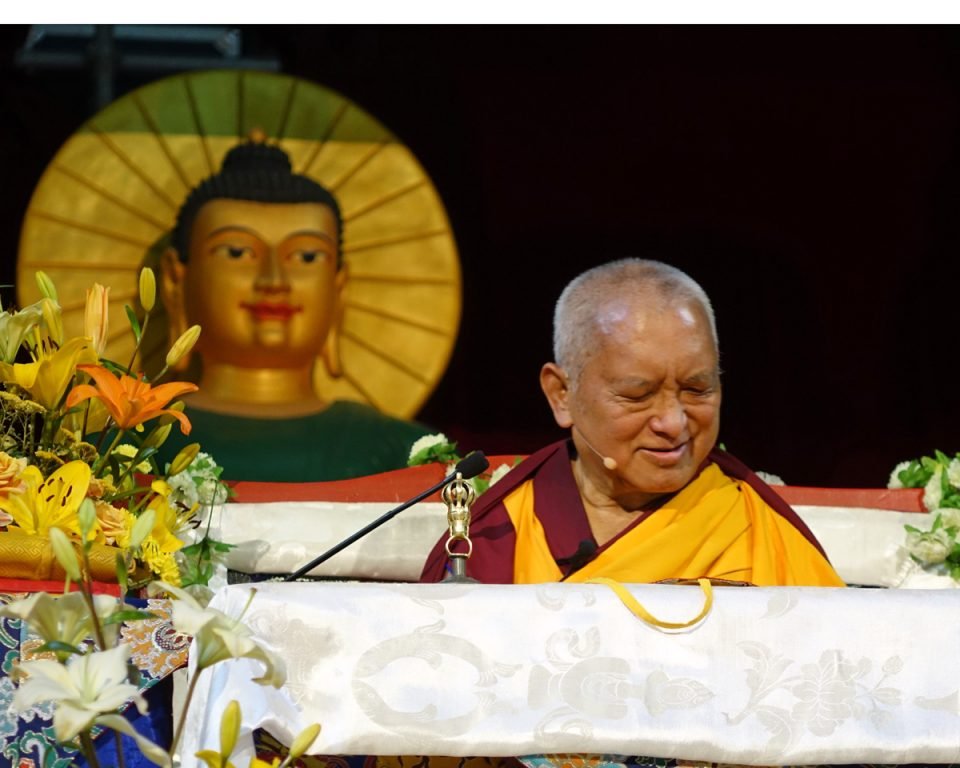
Lama Zopa Rinpoche offering an oral transmission of the Sutra of Golden Light, Great Stupa of Universal Compassion, Bendigo, Australia, October 2014. Photo by Ven. Roger Kunsang.
Lama Zopa Rinpoche has said about the Sutra of Golden Light, “This text is very precious; it brings peace and happiness and is very powerful to stop violence. By hearing this text, one’s karma is purified.” Rinpoche has made a personal vow to propagate the Sutra of Golden Light and give oral transmissions of it in many parts of the world. Having the sutra recited as much as possible is also one of Rinpoche’s Vast Visions for FPMT. Rinpoche has said, “I would like to make this request with my two palms together, to please recite the Sutra of Golden Light for world peace as much as you can.”
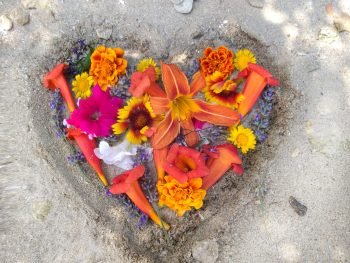
Flower offering on a river bank in Ukraine where students performed an animal liberation on Saka Dawa despite a bomb landing near their location.
For many years, students around the world have been reciting this powerful sutra to fulfill Rinpoche’s wishes and bring about a better world. So far this year, students in more than thirty countries have been reciting the Sutra of Golden Light. As of June, the sutra has been recited more than 1,250 times in 2022, with more than a fourth of those recitations happening in Ukraine.
When war broke out in Ukraine, a Buddhist student there made a translation of the sutra into Ukrainian. A group of students there then began reciting the sutra daily. This group also held an animal liberation for over 100 crawfish on Saka Dawa. A bomb landed in front of them on the other bank of river as they practiced, but they continued. One of the participants shared, “So this is our life now—hearing bombs and warning alarms, but keeping on practicing.” This practice of animal liberation was inspired by Chapter Seventeen, “The Previous Lives of Jalavahana’s Fish Disciples.” Another student shared, “That chapter told us how Jalavahana saw the numerous hundreds of fish, that had a lack of food and water and helped them. The strength of Jalavahana’s compassion for those fish was so powerful that it touched my heart. Having read this chapter, the seed of bodhicitta emerged in our hearts.”
Ganden Tendar Ling Center in Moscow has also organized a group recitation of the Sutra of Golden Light on Zoom, completing 108 recitations as of late May. Ganden Tendar Ling wrote about the ongoing group recitation practice, “We dedicated the merits to peace in the whole world, to a good rebirth of the killed people, to the leaders of all countries to meet the Dharma and to govern their countries according to the Dharma, to development of compassion in the heart of all people especially of the military people, to generating bodhicitta in the mind of those who were reciting the sutra and in the minds of all sentient beings. We dedicated merits to the long life of His Holiness Dalai Lama and Lama Zopa Rinpoche. We continue the group recitation and are going to collect another 108.”
Students in Singapore, the Netherlands, and Italy have also contributed significantly to this year’s recitation count. The total count of Sutra of Golden Light recitations done is 54,029 by students in ninety countries. Students doing the recitations have regularly reported experiencing a sense of peace from even reciting a small amount of the sutra.
Please visit our webpage dedicated to the recitation of the Sutra of Golden Light where you will find many resources and links, including:
- PDFs of the sutra in fifteen different languages
- Audio and video of Lama Zopa Rinpoche offering an oral transmission of the sutra
- Advice from Rinpoche on the benefits of reciting the sutra
- Instructions on how to dedicate your recitations and how to report them
- Stories from students about experiences reciting the sutra
“The holy Sutra of Golden Light is extremely powerful and fulfills all one’s wishes, as well as bringing peace and happiness for all sentient beings, up to enlightenment,” Rinpoche said in the advice “Recite the Golden Light Sutra for World Peace.” “It is also extremely powerful for world peace, for your own protection, the protection of your country, and the world. Also, it has great healing power for living beings in the area in which you are reciting.”
Learn more and find links and resources on our Sutra of Golden Light page:
https://fpmt.org/education/prayers-and-practice-materials/sutras/golden-light-sutra/
Related reading: Institut Vajra Yogini Offers Over 1,000 Recitations of ‘Sutra of Golden Light’ to Rinpoche:
https://fpmt.org/fpmt-community-news/news-around-the-world/institut-vajra-yogini-offers-over-1000-recitations-of-sutra-of-golden-light-to-rinpoche/
Currently FPMT Translation Services is overseeing the translation of the 29-chapter and 31-chapter versions of the Sutra of Golden Light as well as reviewing the translation of the 21-chapter edition. You can help sponsor these projects through the FPMT Translation Fund.
FPMT.org and Mandala Publications brings you news of Lama Zopa Rinpoche and of activities, teachings, and events from 150 FPMT centers, projects, and services around the globe. If you like what you read, consider becoming a Friend of FPMT, which supports our work.
5
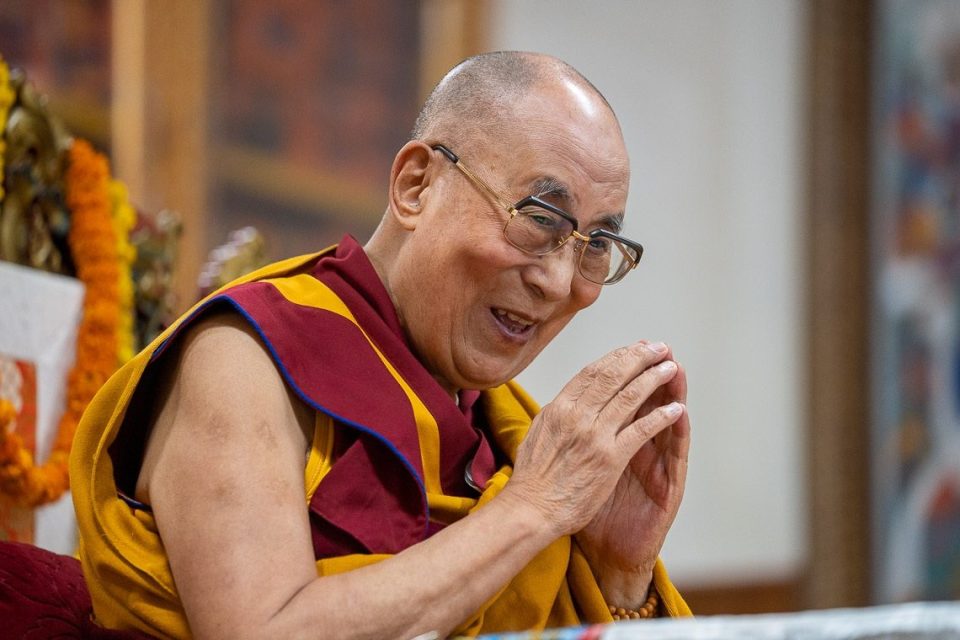
His Holiness the Dalai Lama smiling at guests gathered for a long life ceremony for His Holiness, Dharamsala, India, June 24, 2022. Photo by Tenzin Choejor, courtesy of DalaiLama.com.
Tibetans around the world, along with an international community of students of Tibetan Buddhism, celebrate His Holiness the Dalai Lama’s 87th birthday on July 6.
FPMT International Office joins the world in gratefully rejoicing in His Holiness’s exceptionally beneficial life and we offer prayers for his good health and long life among us. His Holiness has been an incomparable source of reverence and guidance to the FPMT organization since its inception, and Lama Zopa Rinpoche reminds us continuously that the highest priority for the organization is fulfilling the wishes of and offering service to His Holiness. “This is the quickest and most vast way of benefiting sentient beings,” Rinpoche has explained.
We have compiled resources for all of those wishing to make His Holiness’s birthday as beneficial as possible, as the means to honor a life of unending service to others, marked with extraordinary patience which inspires all.
On behalf of all sentient beings in desperate need of your perfect example of universal love and unending compassion for others—please, please live a very long time, Your Holiness!
For more on His Holiness the Dalai Lama and his beneficial activities, please visit DalaiLama.com.
Lama Zopa Rinpoche is the spiritual director of the Foundation for the Preservation of Mahayana Tradition (FPMT), a Tibetan Buddhist organization dedicated to the transmission of the Mahayana Buddhist tradition and values worldwide through teaching, meditation and community service.
23
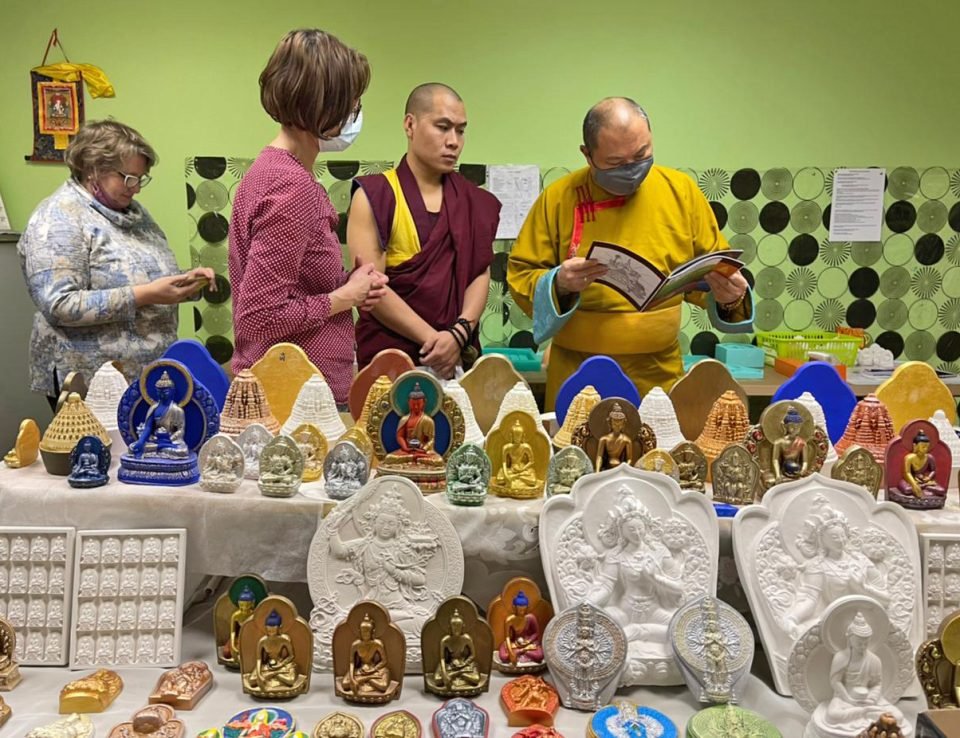
Telo Tulku Rinpoche looking through Nalanda Monastery Workshops’s catalog of silicone tsa-tsa molds, Moscow, Russia, November 2021. Photo by Nima-Handa.
The Tsa-tsa Workshop, an educational project of Ganden Tendar Ling Center, the FPMT center in Moscow, Russia, has been teaching the tsa-tsa making practice since November 2019. Center director Andrey Lomonosov shared the following update on the workshop.
At the beginning of 2021, a community from Kalmykia asked us to help make tsa-tsas for the construction of a temple complex in the village Ketchenery. Kalmykia is a republic in Russia where Buddhism is the primary religion. Ketchenery is special because it is the birthplace of Geshe Ngawang Wangyal (1901-1983), who played a key role in introducing Tibetan Buddhism to the West. In 1958, Geshe Wangyal established the first Tibetan Buddhist Dharma center in the United State, where leading Western scholars such as Robert Thurman, Jeffrey Hopkins, and Alexander Berzin studied. The temple complex that is being built in Ketchenery is on a site that His Holiness the Dalai Lama personally chose and consecrated when he visited Kalmykia thirty years ago.

Image of temple complex planned for Ketchenery, Kalmykia
For the construction of the temple complex, it was necessary to produce 10,000-12,000 tsa-tsas by the end of 2021. Local residents make tsa-tsas from clay, but it is difficult for them to make a large amount without the help of others. At the beginning of 2021, we began making tsa-tsas for Ketchenery as group practices on weekends.
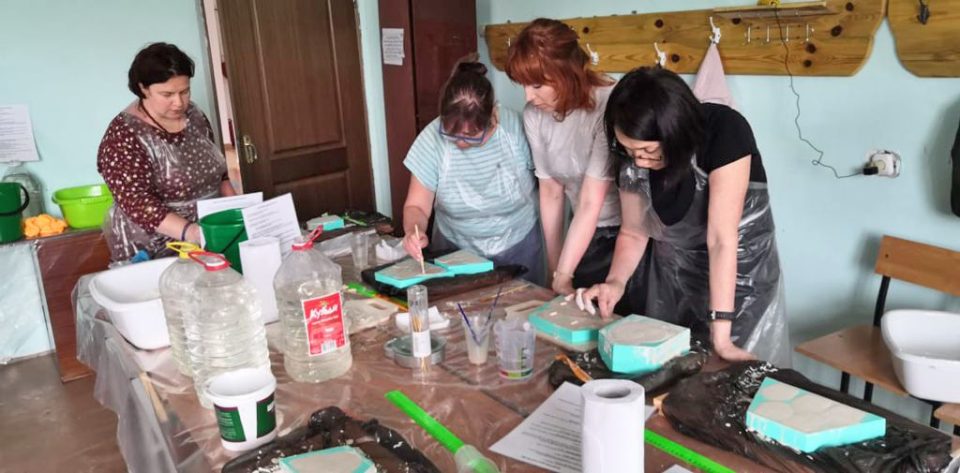
Making tsa-tsas in Ketchenery, Kalmykia, Russia, May 2021. Photo by Nima-Handa.
In May 2021 by the blessing of Telo Tulku Rinpoche—who is the Shadjin Lama of the Kalmyk Republic (Head of Kalmyk Buddhists) and the representative of His Holiness the Dalai Lama in Russia, Mongolia, and Commonwealth of Independent States countries—a group of eight volunteers led by Nima-Handa, the coordinator of the workshop, went to Ketchenery to make tsa-tsas on site. It took eighteen hours to drive from Moscow to Ketchenery by car. The volunteers brought with them all the necessary equipment—silicone molds, plaster, paints, as well as books that the Ganden Tendar Ling Center presented to the villagers. During one week, the volunteers were able to make about 1,500 tsa-tsas. It was intended for them to stay longer and make more, but, unfortunately, due to the outbreak of the pandemic in the village, the volunteers had to return to Moscow.

Telo Tulku Rinpoche looking at tsa-tsas, Moscow, Russia, November 2021. Photo by Liana.
In Moscow, we continued to make tsa-tsas for Ketchenery. In September the directors of Ganden Tendar Ling decided to rent a special room for the workshop that allowed people to make tsa-tsas not only on weekends but on other days as well. Every week around twenty people engaged in making tsa-tsas in our workshop.
On November 28, Telo Tulku Rinpoche visited the workshop to consecrate the next batch of ready-made tsa-tsas before being sent to Kalmykia. It was a great honor for the volunteers to receive Rinpoche in the workshop. We talked in detail about the process of making a tsa-tsas from plaster and showed him all of our tools and materials. Rinpoche was very pleased with our success and noted that this is a real contribution to the revival of Buddhist art in Russia, lost during the years of repression in the last century. Rinpoche recommended that next year we should travel to Kalmykia to train local residents in the practice of making tsa-tsas.
By the end of 2021 the total quantity of tsa-tsas sent to Kalmykia exceeded 3,000 pieces. We were very happy to make our contribution to fulfilling the wish of His Holiness Dalai Lama to build a temple complex in the village Ketchenery in Kalmykia. Our special thanks to Nalanda Monastery Tsa-Tsa Workshop, which supported us in learning the practice of making tsa-tsas.
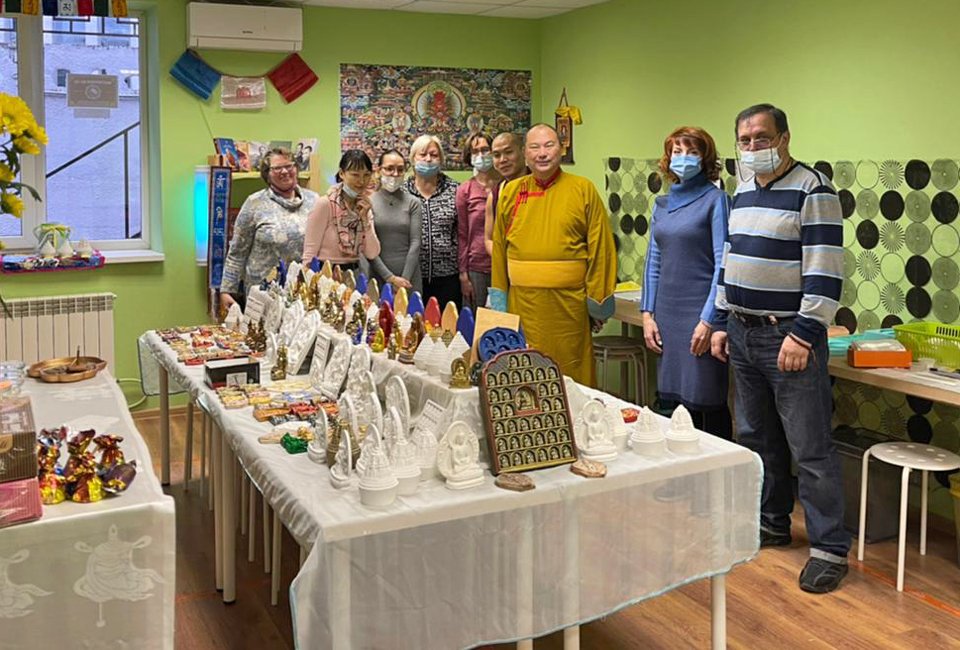
Telo Tulku Rinpoche with Tsa-tsa Workshop volunteers, Moscow, Russia, November 2021. Photo by Nima-Handa.
To learn more about Ganden Tendar Ling Center, visit their website:
https://fpmt.ru/
FPMT.org and Mandala Publications brings you news of Lama Zopa Rinpoche and of activities, teachings, and events from 150 FPMT centers, projects, and services around the globe. If you like what you read, consider becoming a Friend of FPMT, which supports our work.
- Tagged: ganden tendar ling, telo rinpoche, tsa-tsas
27
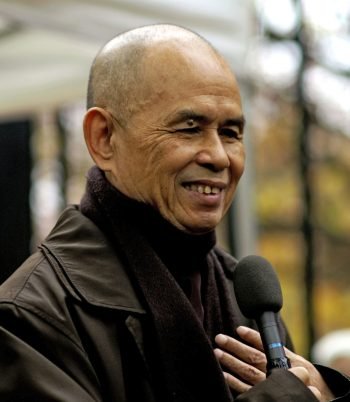
Thich Nhat Hanh, Paris, 2006. Photo by Duc (pixiduc) from Paris, France, CC BY-SA 2.0 via Wikimedia Commons.
Buddhist monk, Vietnamese Zen Master, engaged-buddhism proponent, and peace activist Thich Nhat Hanh passed away on January 22, 2022, at the age of 95. Spiritual leaders as well as FPMT students and centers around the world have been sharing the deep appreciation they had for this teacher of non-violence and mindfulness.
His Holiness the Dalai Lama released the following message of condolence:
“In his peaceful opposition to the Vietnam war, his support for Martin Luther King and most of all his dedication to sharing with others not only how mindfulness and compassion contribute to inner peace, but also how individuals cultivating peace of mind contributes to genuine world peace, the Venerable lived a truly meaningful life. I have no doubt the best way we can pay tribute to him is to continue his work to promote peace in the world.”
His Eminence the 7th Kyabje Ling Rinpoche encouraged everyone to rejoice and to be inspired by Thich Nhat Hanh’s exemplary life of tireless service to the Buddhadharma and to promoting non-violence, peace and harmony in Vietnam and throughout the entire world.
We invite you to read two teachings from Thich Nhat Hanh previously published in Mandala magazine, Embracing Anger, and Going Home to Yourself.
For more on Thich Nhat Hanh and his passing, please visit the Plum Village website.
FPMT.org brings you news of Lama Zopa Rinpoche and of activities, teachings, and events from FPMT centers, projects, and services around the globe as well as from students, teachers, and others in the FPMT community. If you like what you read, consider becoming a Friend of FPMT, which supports our work.
- Tagged: obituaries, thich nhat hanh
6
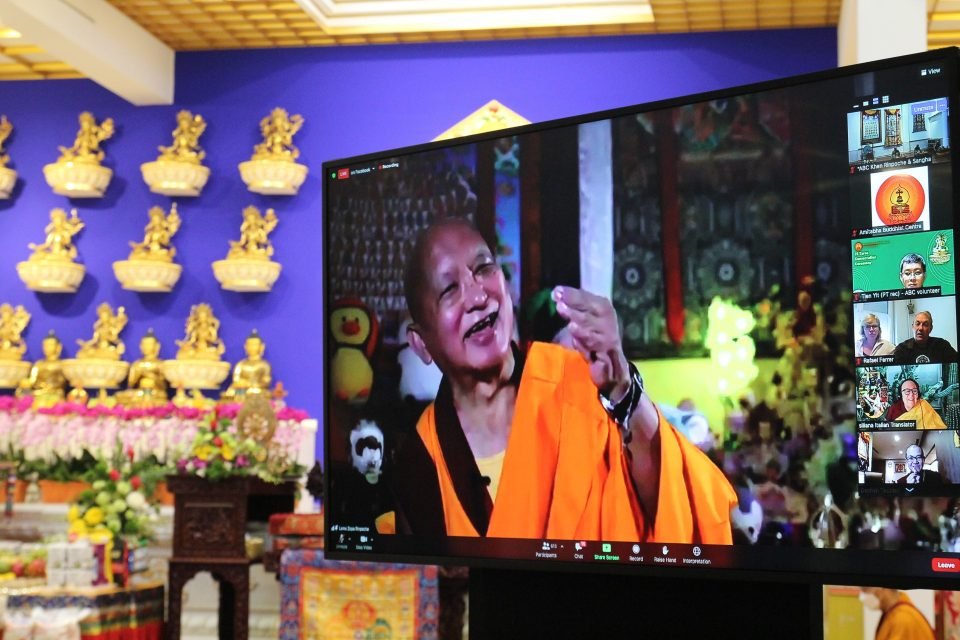
Screenshot of Lama Zopa Rinpoche teaching during the Twenty-one Tara statues consecration at Amitabha Buddhist Centre, Singapore.
Recently, Amitabha Buddhist Centre (ABC) in Singapore completed an ambitious holy object project advised by Lama Zopa Rinpoche. The three-year project added statues of all the Twenty-one Taras, each standing twenty-four inches high, to the altar in ABC’s beautiful gompa. As part of the October 2021 statue consecration ceremony activities, Lama Zopa Rinpoche offered a teaching via Zoom. We are happy to share the video of this teaching with a complete transcript.
Here’s a summary of Rinpoche’s teaching:
Rinpoche begins by thanking everyone listening for their daily Dharma practice, specifically for benefiting others. Rinpoche then offers praise directly to Tan Hup Cheng, director of ABC, for his decades of service to Rinpoche, actualizing Rinpoche’s wishes. Rinpoche also thanks Khen Rinpoche Geshe Chonyi, resident teacher of ABC, explaining that, “Even if you offer him skies of wish-granting jewels, not just diamonds, it is never enough. It is not enough to repay the kindness of Khen Rinpoche teaching each word, each time, each class.” Rinpoche also thanks all of the people who have worked to develop ABC and have put effort in with body, speech, and mind over the years. (Watch a short history of ABC on YouTube.)
“Without ABC having started, then all those sentient beings wouldn’t get this opportunity,” Rinpoche explains. “They would not get this opportunity to be closer to freedom from samsara and closer to achieving enlightenment. So many didn’t get reborn in the lower realms and got a higher rebirth. You have to know that—it all came from all the members who worked at different times, who dedicated their precious time to ABC.” Rinpoche emphasizes that working for the center is fulfilling His Holiness the Dalai Lama’s wishes.
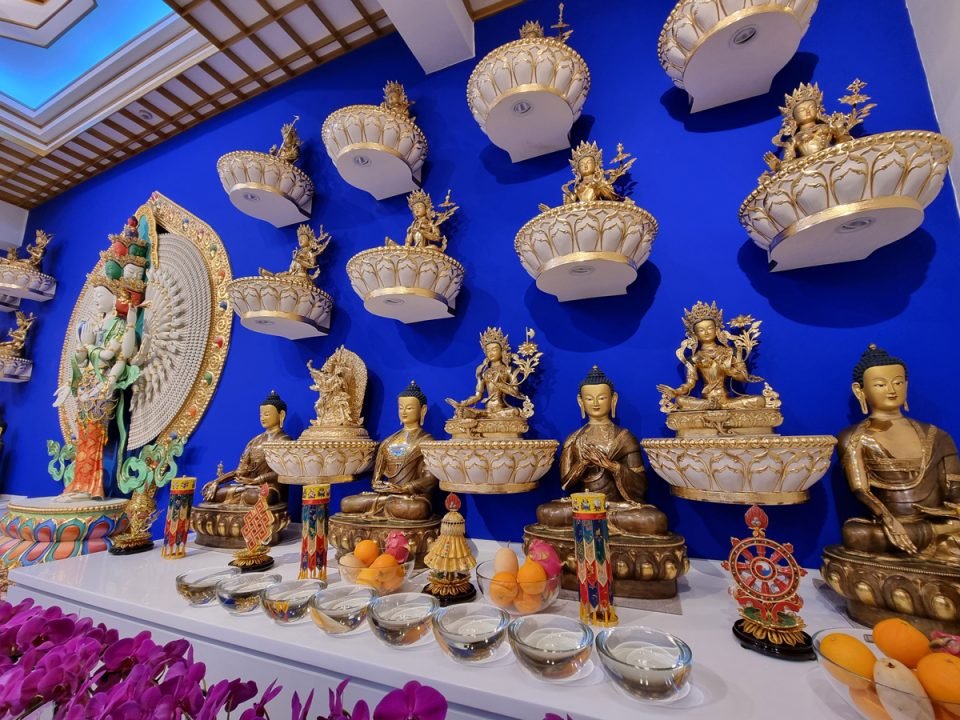
Several of the Twenty-one Taras statues at Amitabha Buddhist Centre, Singapore.
Rinpoche explains that everything you do with bodhichitta covers the six-realm sentient beings and benefits all the beings you see around you. When you help one single sentient being, you are fulfilling all the Buddhas’ holy wishes. In fact, helping sentient beings is the best offering to the buddhas and bodhisattvas.
Even if you don’t believe in reincarnation and karma, Rinpoche says, you still need holy Dharma, you still need patience. Even if you don’t know Dharma, you need loving kindness and compassion, forgiveness, and moral discipline.
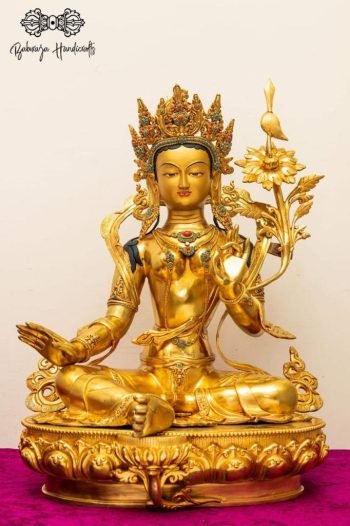
One of the completed Tara statues completed at ABC, Singapore.
You also need to practice contentment and satisfaction, Rinpoche urges. Without it, it is like your mind is in hell. Your happiness has to come from your mind and your suffering has to be stopped from your mind. The mistake is believing that happiness and suffering come from the outside. In fact, enlightenment and hell are in your hands and depend on how you think.
Rinpoche then offers some practical advice for practicing thought transformation in daily life:
- When you experience suffering think that it finishes your negative karma and that you will have happiness in the future.
- When you experience suffering take others’ suffering on yourself.
Rinpoche then spends time discussing Mother Tara, who Rinpoche says is the manifestation of all the buddhas’ holy actions. The consecration of the statues followed this teaching.
Please join us in rejoicing in the completion of this beautiful holy object project, the ongoing success of ABC fulfilling Lama Zopa Rinpoche’s wishes, and the offering of this teaching from Rinpoche during the auspicious consecration event.
Lama Zopa Rinpoche is the spiritual director of the Foundation for the Preservation of Mahayana Tradition (FPMT), a Tibetan Buddhist organization dedicated to the transmission of the Mahayana Buddhist tradition and values worldwide through teaching, meditation and community service.
To help ensure grants like this continue toward holy objects, all are welcome to offer a donation of any amount to the Holy Objects Fund.
28
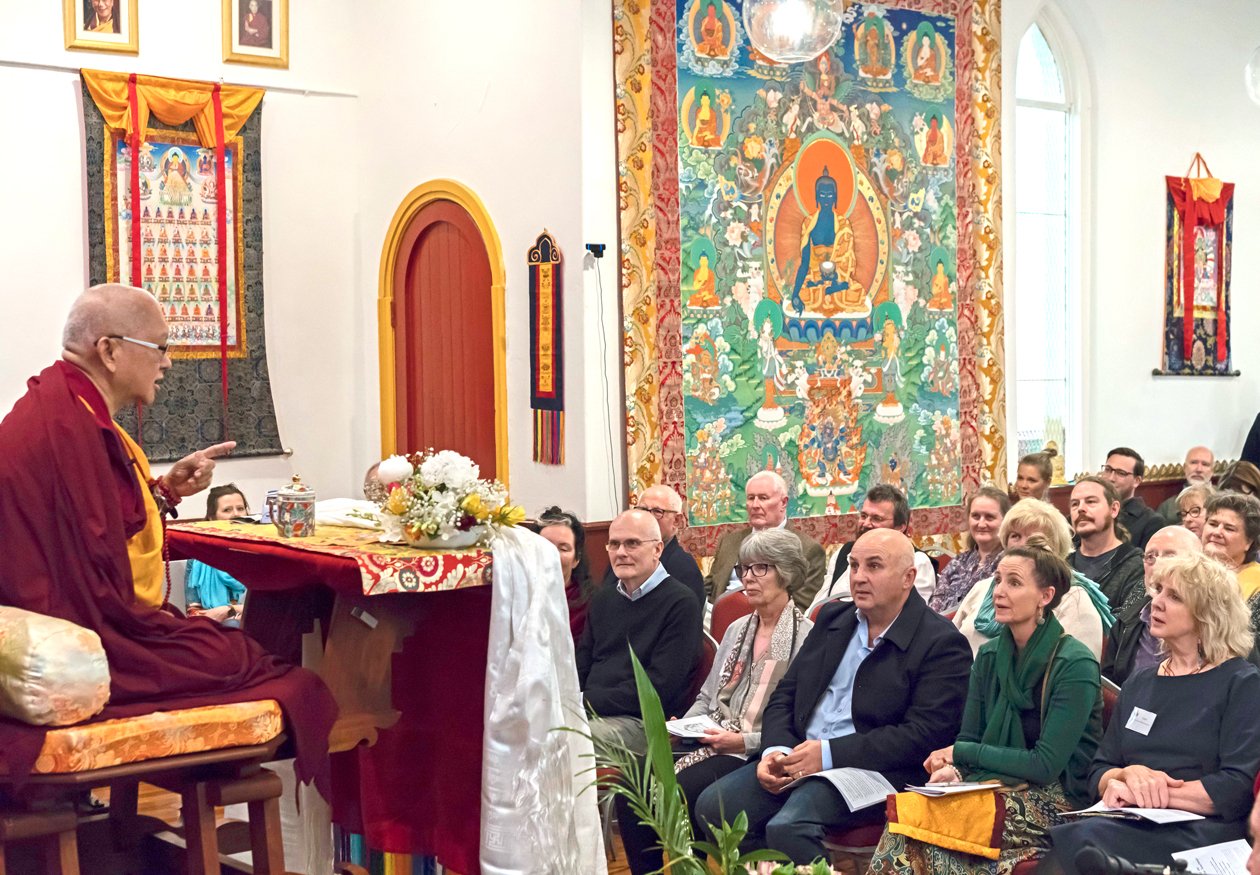
Lama Zopa Rinpoche giving a teaching during the opening of Buddha House in its new location, Adelaide, Australia, May 2018. Photo by Ven. Lobsang Sherab.
Lama Yeshe and Lama Zopa Rinpoche inspired thousands of students from around the world through the teachings they offered at Kopan Monastery in Nepal during the 1970s and 80s. The centers started by those early students formed the basis for the international FPMT organization. Many of those centers continue to thrive, bringing Dharma teachings to a new generation of students. This year two FPMT centers, Nalanda Monastery in France and Buddha House, in Adelaide, Australia, celebrated their fortieth anniversaries. Here’s an update on Buddha House, based on an article by Lyndy Abrams, who was both key to the founding of the Buddha House and currently serves as the center’s director.
In early December, Buddha House hosted a celebration of its fortieth anniversary. Due to the pandemic, the event was smaller than anticipated. Regardless, forty people gathered for a celebratory dinner, which included a special video from Lama Zopa Rinpoche, a presentation on the history of the center with 200 photos, and lots of shared reminiscing, laughter, and rejoicing.
In Lama Zopa Rinpoche’s video, he sends his greetings and reminisces about the times he has spent at Buddha House. Rinpoche named and thanked all the past directors many times and said they created “skies of merit” and “sacrificed their lives” with patience and dedication. He thanked all the past teachers making special mention of the incredible kindness of Khensur Kangyurwa Lobsang Thubten Rinpoche. He called him Khensur Rinpoche Guru, saying he had helped very much, was very knowledgeable, and was an expert on all the teachings. After giving specific teachings on emptiness, developing bodhicitta, and not wasting our lives, Lama Zopa finished by saying if you help the FPMT center, you help so many sentient beings and this is why the center exists. This is most important, Rinpoche says, to give the opportunity to study the Buddha’s teachings.
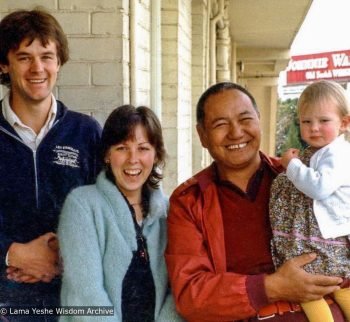
Lama Yeshe with Will, Lyndy, and Sarah Jay Abrams, Adelaide, Australia, 1981. Photo courtesy of Lama Yeshe Wisdom Archive.
Buddha House’s history goes back to the 1970s when Lyndy and Will Abram attended a month-long lamrim courses at Kopan Monastery in Nepal with Lama Yeshe and Lama Zopa Rinpoche. In 1981, when Lyndy and Will heard that Lama Yeshe would be doing a teaching tour of Australia, they extended an invitation for him to come and teach in Adelaide.
In late July of that year, Lama Yeshe arrived in the South Australia capital city and taught for three days on The Three Principal Aspects of the Path. The teachings were attended by about seventy-five people, many asking if there was a local center where they could learn more about Buddhism. While in the car driving Lama Yeshe to the airport, Lyndy asked Lama Yeshe if they could start a center in Adelaide.
“Lama said, ‘Yes,’ and to call it Buddha House, Centre for Advanced Buddhist Studies,” Lyndy writes about the historic moment. “He added that it was up to the students to make it happen, and he advised that we do lamrim meditation.”
Lama Yeshe was accompanied by Ven. Thubten Dondrub on the visit, who is from Adelaide and was by then an ordained monk. Gen Dondrub, as his students call him, became the resident teacher of Buddha House in 2012. This year the center purchased an adjoining property for Gen Dondrub to live in, ensuring he is well cared for even after retirement. The center also offered him a long life puja in June. “We are most fortunate to have him as our teacher,” Lyndy writes.
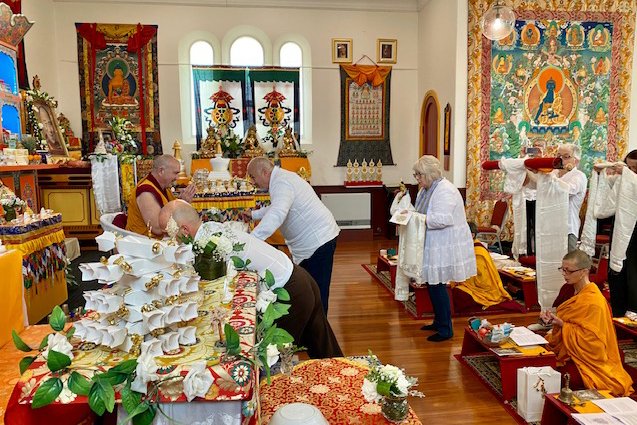
Tony Migalka, Judy Wagner, Jan Vaughan, and Cathy Davis making long life offerings to Gen Dondrub at Buddha House, Adelaide, South Australia, June 2021. Photo by Joanne Foo.
Over the years, Buddha House has been served by many excellent resident teachers, who Lama Zopa Rinpoche listed and thanked in the video he recorded for the anniversary. The center has also been blessed with visits by many inspiring and well regarded teachers. In particular, in 1992 the center organized a visit to Adelaide by His Holiness the Dalai Lama, which included a multi-faith event, a Dharma teaching and Chenrezig empowerment, and a public talk attended by over 12,000 people.
Lama Zopa Rinpoche has also visited Buddha House on seven occasions over the years. Rinpoche’s first visit was in 1984. Rinpoche’s most recent visit was in 2018, when Rinpoche came to the opening of the center’s new building.
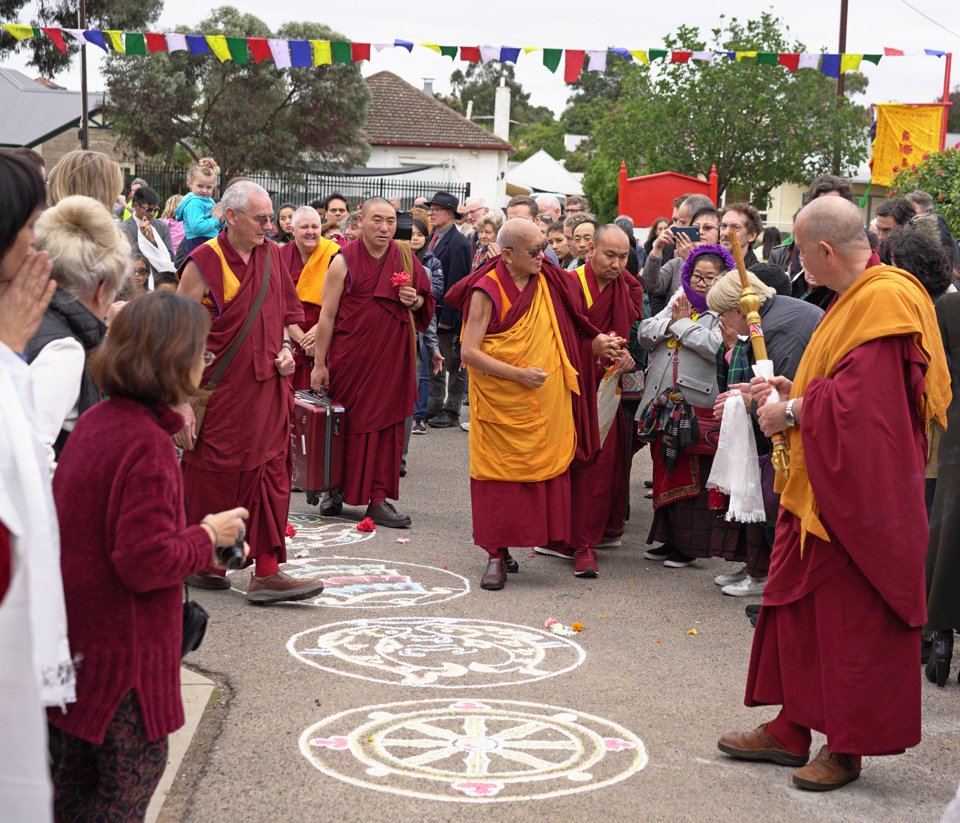
Lama Zopa Rinpoche at the opening of Buddha House in its new building, Adelaide, Australia, May 2018. Photo by Ven. Lobsang Sherab.
“Buddha House has a very strong volunteer base, with no paid workers. Many have given over twenty years of service, either in the office or leading meditations. Some of the founding members still lead meditations,” Lyndy Abram writes. “Buddha’s Bowl Catering has brought in need funds during our evolving years with up to twenty volunteers cooking and serving food at major events. Buddha House volunteers supported the building of the stupa at DeTong Ling Retreat Centre, our sister center on Kangaroo Island, and volunteers have ensured the success of many other projects, including the initial visits of the Gyuto monks and events with the Maitreya Loving Kindness Relic Tour.”
The center has an active spiritual program that includes regular Dharma teachings and several guided meditations offered each week. They also organize several popular outreach programs, including a program for those recovering from addiction, a children’s class, programs for those with life challenging illnesses, and a mental health first aid training course. The center also mentors the Himalayan Buddhist refugee community living in the northern suburbs.
Please join us in rejoicing in all the beneficial activities of Buddha House and its dedicated students for so many years.
To learn more about Buddha House, visit their website Buddhahouse.org.
FPMT.org and Mandala Publications brings you news of Lama Zopa Rinpoche and of activities, teachings, and events from over 160 FPMT centers, projects, and services around the globe. If you like what you read, consider becoming a Friend of FPMT, which supports our work.
- Tagged: buddha house, fpmt history, lama yeshe, lama zopa rinpoche, lyndy abram, ven. thubten dondrub
30
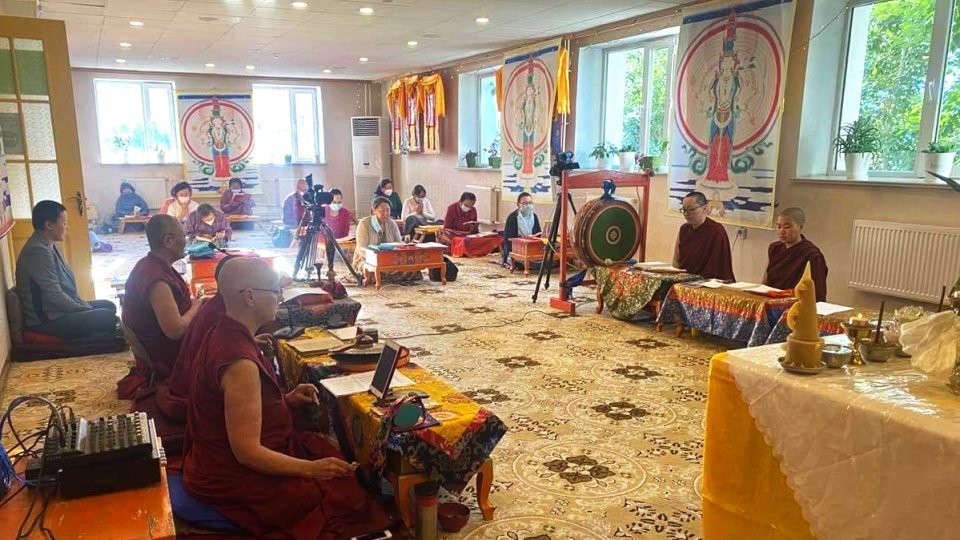
Gompa of Ganden Do Ngag Shedrup Ling during 100 Million Mani Retreat, which was streamed live to participants, Ulaanbaatar, Mongolia, September 2021. Photo courtesy of FPMT Mongolia.
One of Lama Zopa Rinpoche’s Vast Visions for the FPMT organization is to sponsor 100 million mani retreats around the world. During a 100 million mani retreat, participants collectively recite 100 million OM MANI PADME HUM mantras. For a ninth year, FPMT Mongolia and Ganden Do Ngag Shedrup Ling, the FPMT center in Ulaanbaatar, have organized a successful 100 million mani retreat. Tuya Purevgonchig, who became director of Ganden Do Ngag Shedrup Ling and FPMT Mongolia in June 2021, shared the news of the completion of the retreat in a letter to Lama Zopa Rinpoche.
“I am happy to report to you that we have successfully completed the ninth Mani Retreat, a hundred percent online, in accordance with the current guidelines and circumstances of the pandemic, as instructed by the Mongolian government,” Tuya writes. The retreat took place September 6 through October 6, 2021.
FPMT Mongolia and Ganden Do Ngag Shedrup Ling organized their first mani retreat in 2013. That initial retreat was led by Lama Zopa Rinpoche and was the first big retreat that he led after he manifested a stroke in 2011. Since then, they have organized a 100 million mani retreat annually.
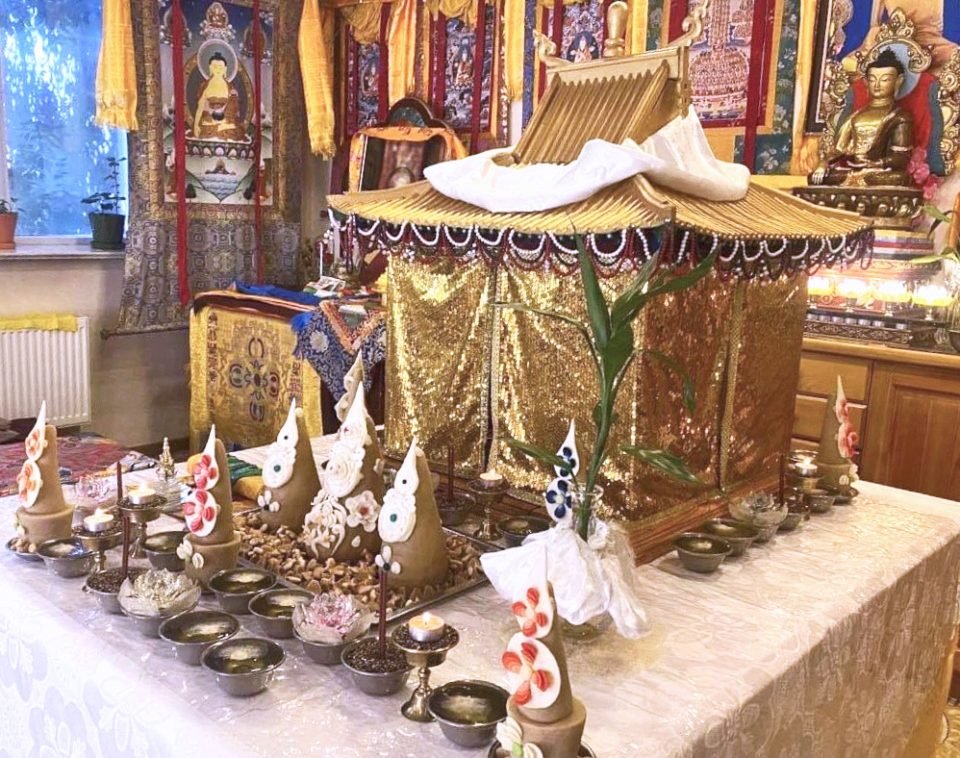
Offerings and altar in gompa of Ganden Do Ngag Shedrup Ling during 100 Million Mani Retreat, which was streamed live to participants, Ulaanbaatar, Mongolia, September 2021. Photo courtesy of FPMT Mongolia.
Ven. Thubten Gyalmo, resident teacher at Ganden Do Ngag Shedrup Ling, and four other nuns of Dolma Ling Nunnery in Ulaanbaatar led the retreat from 7:30 A.M. until 6:30 P.M. every day in the gompa at the center, which was streamed live to the public.
Jhado Rinpoche spoke at the retreat’s opening ceremony. He also gave a talk on the benefits of the six syllables of the mani mantra during the retreat. Geshe Thubten Zopa, an FPMT touring teacher, attended the first and last sessions, giving a talk and concluding dedications.
The center organized mantra recitations separately at the Battsagaan Temple of Gandan Tegchenling Monastery for the last three days of the retreat. Two hundred monks attended on the first day, then between thirty to fifty monks from Idgachoinzinling Dratsangs attended on the last two days.
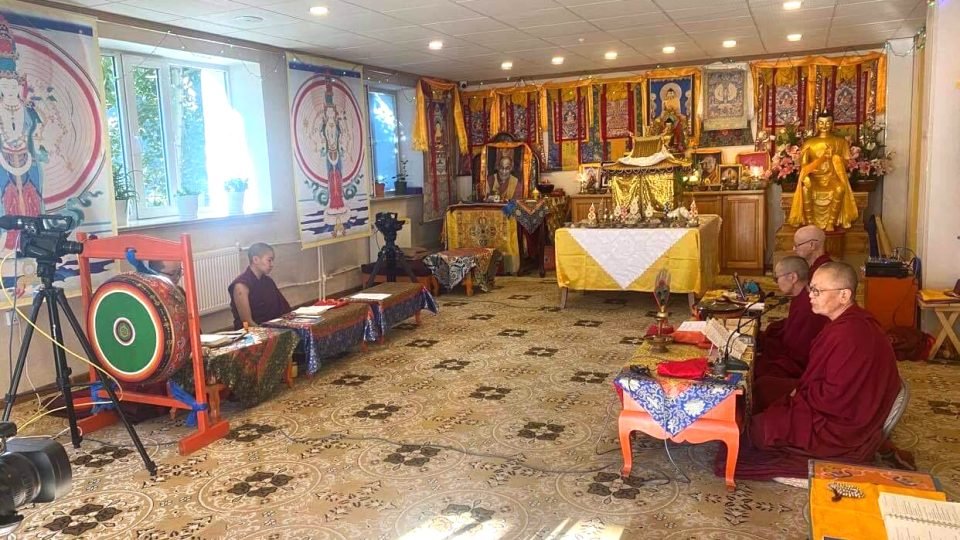
Gompa of Ganden Do Ngag Shedrup Ling during 100 Million Mani Retreat, which was streamed live to participants, Ulaanbaatar, Mongolia, September 2021. Photo courtesy of FPMT Mongolia.
“It was challenging and yet truly a rewarding first mani retreat experience for me as a new director. However, with the kindness of all the FPMT Mongolia staff, nuns, donors, and the Dharma students from all around the world, we managed to complete the Mani Retreat 2021 together successfully,” Tuya writes.
“This year, the total number of mantra recitations was 114,442,502. On behalf of FPMT Mongolia, I’m delighted to offer Rinpoche this mantra number with all the merit accumulated. May it be a cause for Rinpoche to have a very long life and may it steadily accomplish all your wishes for Mongolia, bringing limitless benefit to sentient beings.”
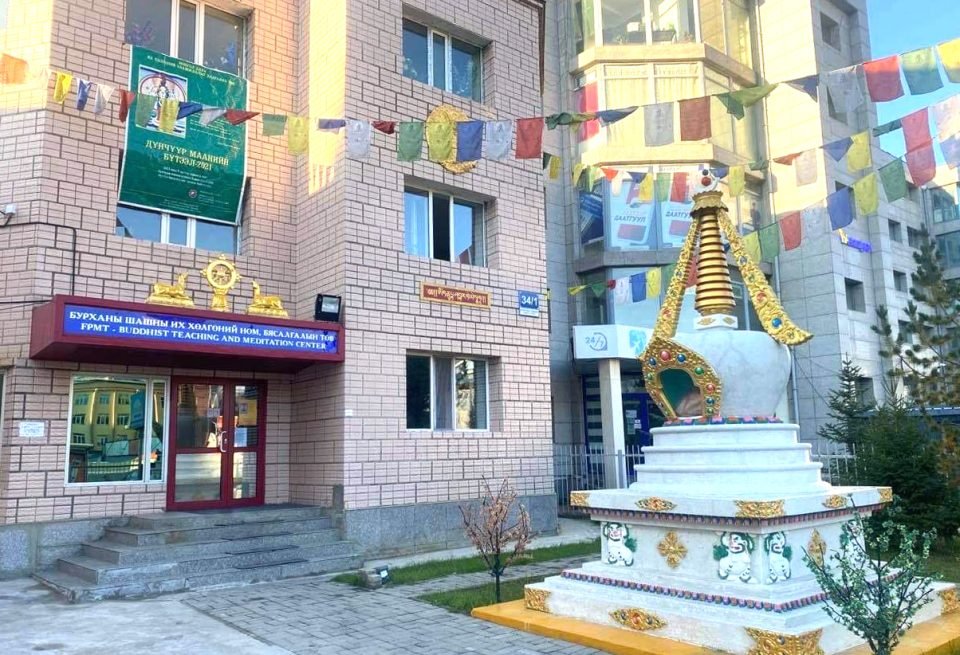
Ganden Do Ngag Shedrup Ling, Ulaanbaatar, Mongolia, September 2021. Photo courtesy of FPMT Mongolia.
The Practice and Retreat Fund provides grants and sponsorships for students engaged in retreats such as 108 nyung nä retreats, 100 million mani retreats, recitations of sutras, and long term retreat.
FPMT.org and Mandala Publications brings you news of Lama Zopa Rinpoche and of activities, teachings, and events from over 160 FPMT centers, projects, and services around the globe. If you like what you read, consider becoming a Friend of FPMT, which supports our work.
15
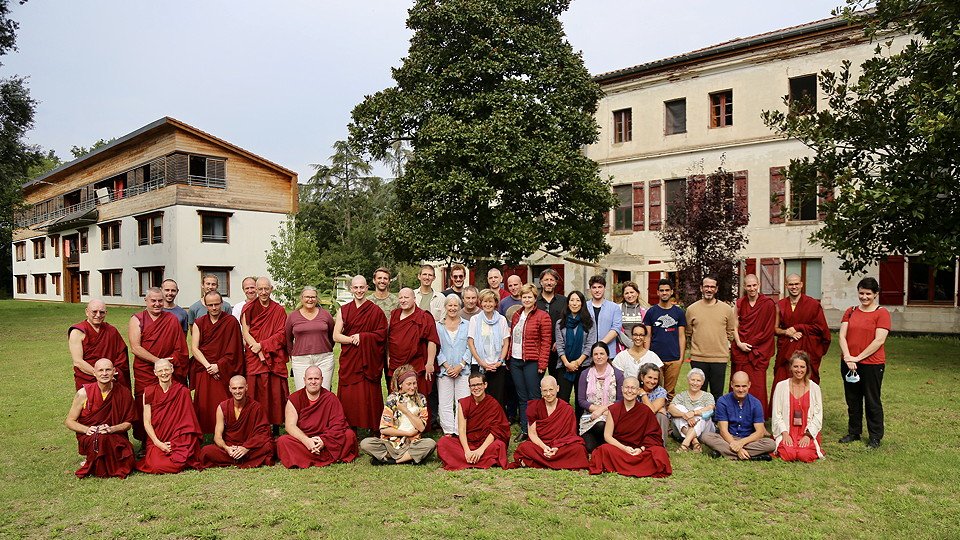
Foundation Service Seminar participants at Nalanda Monastery, France, September 2021. Photo by Ven. Zoksang.
The Foundation Service Seminar (FSS) is the “FPMT immersion retreat.” It provides essential information and nourishment for all serving, or wishing to serve, in the FPMT organization. The FSS Retreat is key to deeply understanding the FPMT organization and the attitude we seek to cultivate as we offer service in the organization. This experiential retreat helps us to actualize the advice that service is practice and to enjoy and rejoice when offering service. Séverine Savignan, who participated in the recent FSS at Nalanda Monastery near Lavaur, France, shares her thoughts on the experience:
Those of us who gathered for the Foundation Service Seminar in late September were fortunate to be able to retreat for a few days at Nalanda Monastery in France. With beautiful gardens surrounding us, a great group of thirty-seven participants settled into the monastery’s amazing gompa for five days of sessions. I’ve been living and studying here in Lavaur since 2019, and it was truly refreshing to be able to connect with other Dharma practitioners, coming from Brazil, Romania, Switzerland, and the United Kingdom.
While we all can look at the FPMT.org website to learn more about what the FPMT organization has to offer, attending the FSS in person helped me really understand in-depth what this international mandala is about. Facilitators Annelies van der Heijden and François Lecointre walked us through FPMT’s lineage, its foundation by Lama Yeshe and Lama Zopa Rinpoche, and the history of its development. We learned about Rinpoche’s Vast Visions for FPMT and the Five Pillars of Service (Dharma, Universal Education for Compassion and Wisdom, social/community service, interfaith activities, and revenue generating activities). Participants had opportunities to reflect and talk to each other throughout these sessions, making it highly meaningful.
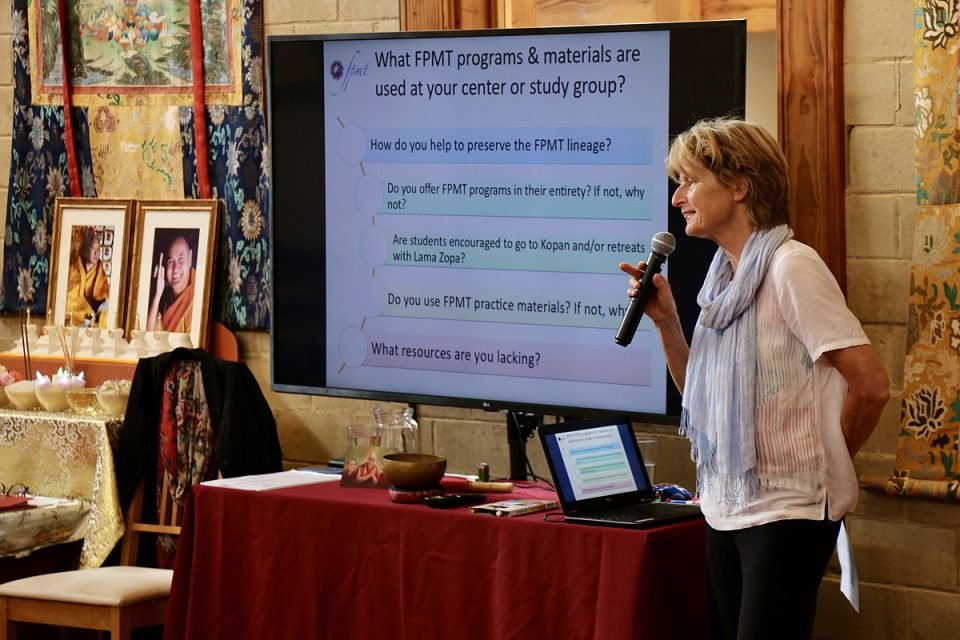
FSS facilitator Annelies van der Heijden, Nalanda Monastery, France, September 2021. Photo by Ven. Zoksang.
I was quite surprised to discover the amount of resources that are available within the FPMT network to support our individual and collective practices. There are many study programs and secular materials available. In addition, there are many charitable projects around the world. Navigating all of these activities and resources is a bit like a maze. Our challenge will be using these resources wisely in order to support our respective projects.
Lama Yeshe created a sense of “family feeling” within the FPMT organization, and it was a key point of the FSS to foster that community feeling and help us set the intention for perpetuating it. Another key point was Lama Yeshe’s vision for the preservation of the Dharma. All this was quite powerful on a personal level, and I think that all of the participants went back to their respective centers and projects with many ideas and points to reflect upon.
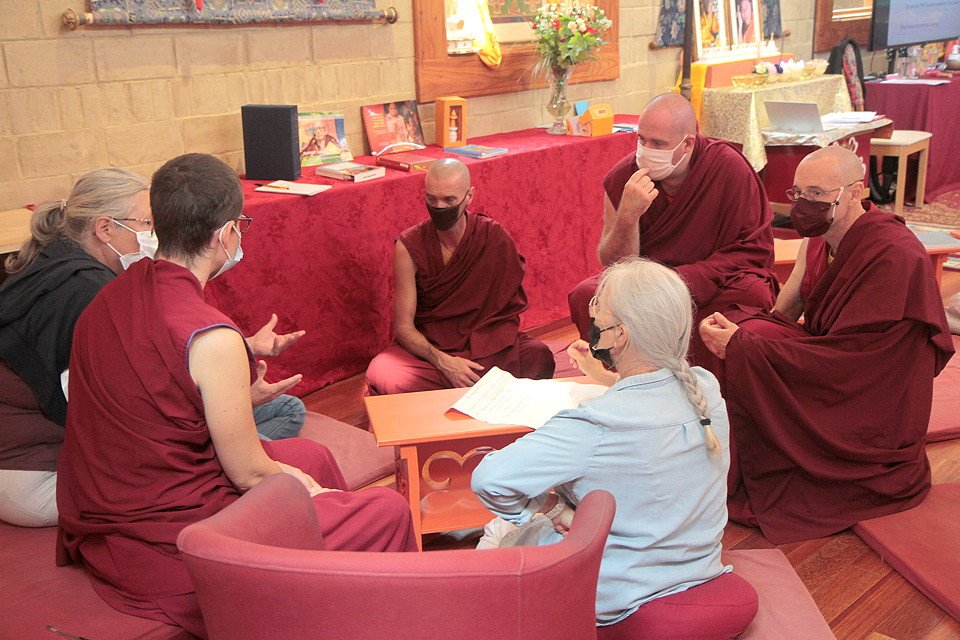
FSS participants in a break out group discussion, Nalanda Monastery, September 2021. Photo by Marine Cecilia.
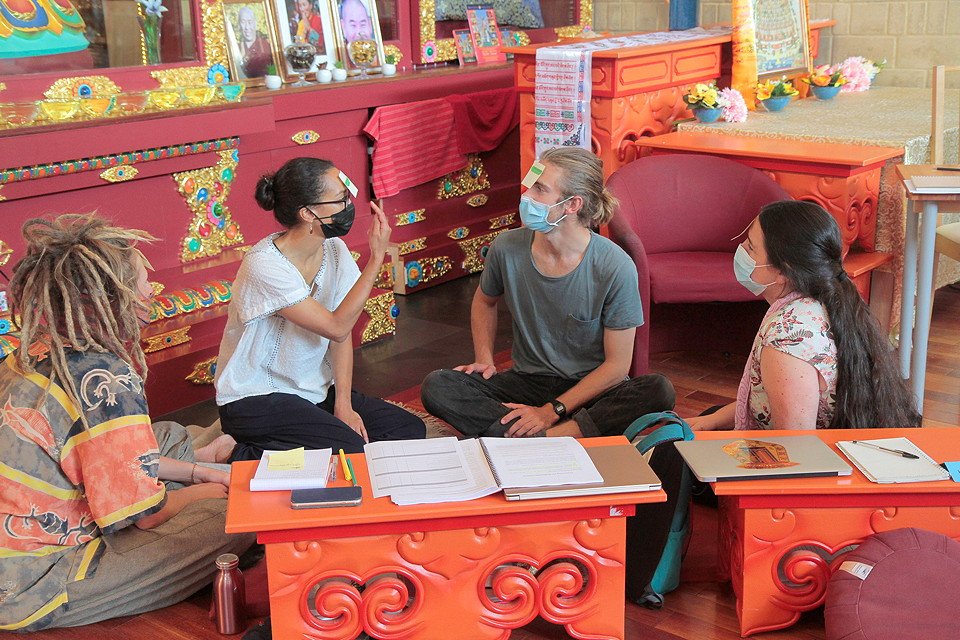
FSS participants playing an Inner Job Description game, Nalanda Monastery, September 2021. Photo by Marine Cecilia.
The format of the seminar was both focused and participatory. There was so much to learn about offering service within the FPMT mandala. We could have spent two more days covering all the details. We nonetheless had time to exchange ideas during tea breaks and lunch time.
This seminar reinforced my conviction that for any Dharma project to succeed, we need a clear motivation, a solid common foundation, and an appropriate structure for doing the work. Our role while offering service within the FPMT organization is to think on how we can help support and actualize the vision and wishes of our lamas, whatever our competencies are, and whatever time we can wisely and happily give.
We know that serving a center, a monastery, a project, or a study group requires a lot of energy. And indeed, as mentioned during the seminar, I shall not forget to relax, rejoice, and rest!
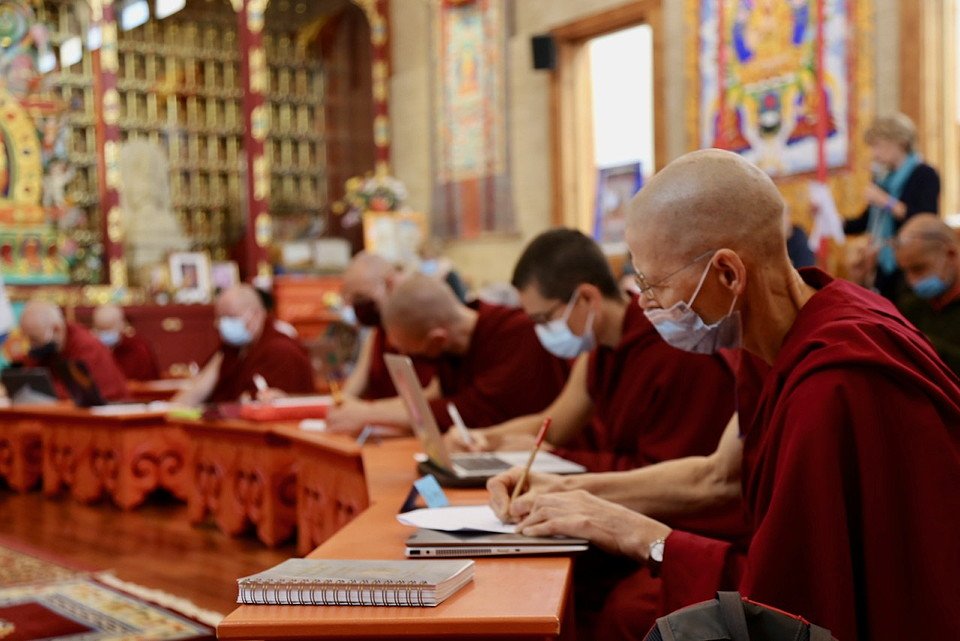
Ven. Palmo Detchen taking notes during the Foundation Service Seminar, Nalanda Monastery, France, September 2021. Photo by Ven. Zoksang.
Séverine Savignan is a French student based in Lavaur, France. While living in Singapore, she and her husband met the Dharma in 2015 at Amitabha Buddhist Centre. Now both Séverine and her husband study at Nalanda Monastery, while also raising a nine-year-old son.
For more information on the Foundation Service Seminar and to find out how to register for future events, visit FPMT Service Seminars.
Lama Zopa Rinpoche is the spiritual director of the Foundation for the Preservation of Mahayana Tradition (FPMT), a Tibetan Buddhist organization dedicated to the transmission of the Mahayana Buddhist tradition and values worldwide through teaching, meditation, and community service.
10
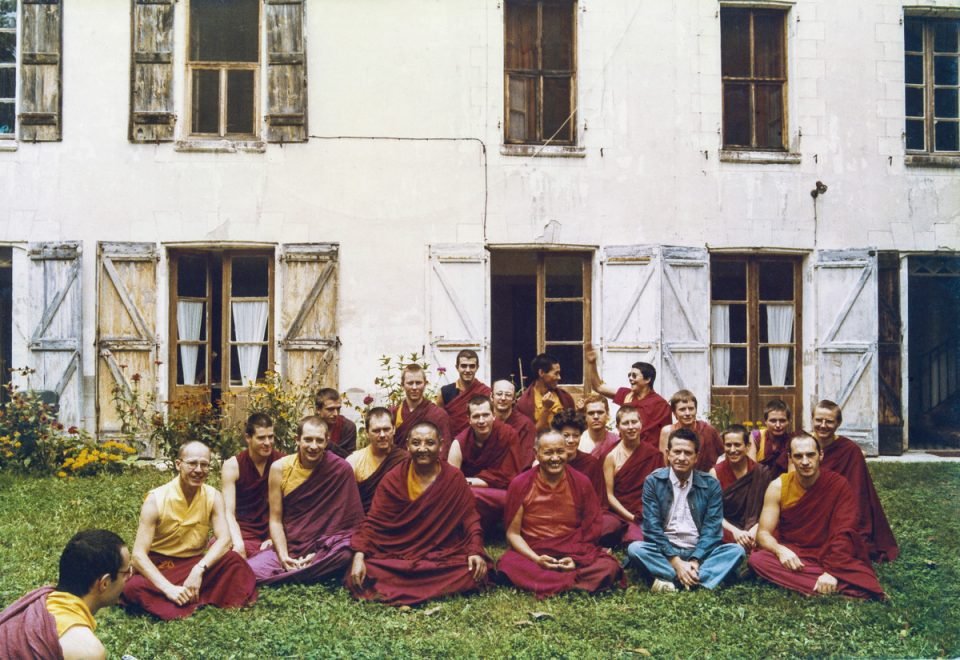
International Mahayana Institute Sangha, Nalanda Monastery, Lavaur, France, 1983. Foreground left side: Francesco Prevosti. Photo (L to R): Dieter Kratzer, Murray Wright, Adrian Feldmann/Gyatso, Jean-Marie, Jimi Neale, David Marks, Geshe Tegchok, Pierro Siriani (rear), Steve Carlier, Martin Willson, Thuben Sherab Sherpa (rear), Lama Thubten Yeshe, Elizabeth Drukier, Joseph Fontaine, Merry Colony (middle), Martine Darrou (rear), Father Bastiani (a local priest, in blue), Sangye Khadro (middle), Thubten Chodron, Anne-Marie, Beppe Molinari, Celia Smith. Photo courtesy Lama Yeshe Wisdom Archive.
Nalanda Monastery, located in Labastide St. Georges, Lavaur, France, is a thriving international center for Dharma study and practice. As a way to celebrate four decades of hard work and devotion, former center director Ven. Tendar and Ven. Jampa (Joris van Bakel) hosted online interviews with many people integral to the founding and development of the monastery. Here Vens. Tendar and Jampa share more on the video series and anniversary activities:
More than forty years ago Nalanda Monastery was founded in an old run-down building in the South of France. Now Nalanda is a flourishing monastery with almost thirty monks, two resident geshes, and an incredibly rich history. As a way to celebrate our fortieth anniversary, we have taken the opportunity to go back in time and see how Nalanda has developed over the years into what it is today. In addition, we want to honor Lama Zopa Rinpoche and his wish to preserve our rich history, honor those who came before us, and understand where we come from. We also wanted to do this while we still have the opportunity to hear the direct experiences of those who started it all.
With these things in mind we started a series of interviews that we call “Nalanda Monastery 40th Anniversary, Honouring Our Former Generations.” With our former directors spread out around the world and our newly acquired Zoom skills, we decided to stream the interviews, which are in English and French. The resulting video recordings create a kind of virtual time capsule, and thus they will be available for all those who come after us as well. In addition to the world-wide Zoom audience, we have a gompa filled with monks, students, and volunteers, who are all eager to learn more about the history of the place they call home.
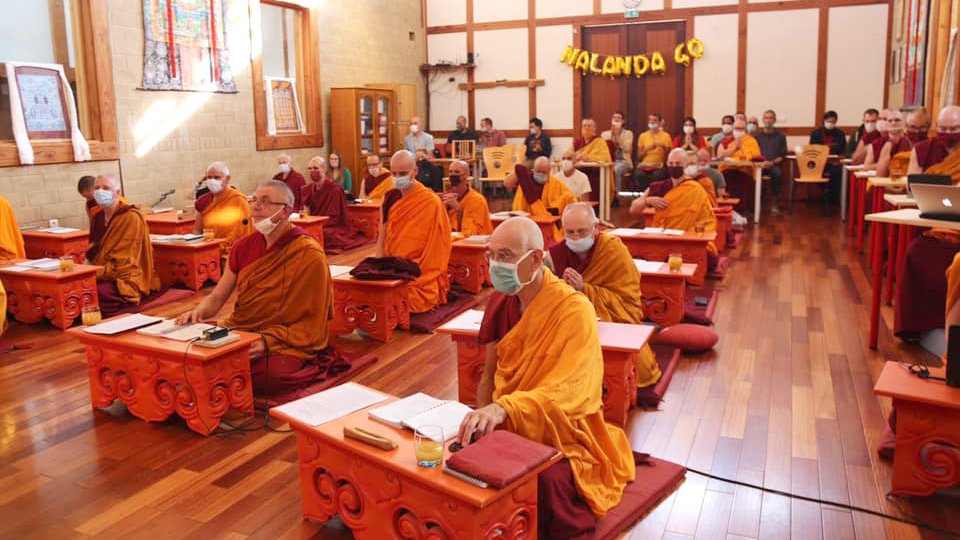
Nalanda monks during a special 40th-anniversary event with Lama Zopa Rinpoche, Nalanda Monastery, October 2021. Photo courtesy of Nalanda Monastery.
We started the series interviewing the French nun Ven. Elisabeth Drukier, who we might refer to as our founding mother as she was instrumental in acquiring the Rouzegas property that we now call our home. Ven. Elisabeth is currently the director of Kalachakra Centre in Paris. More than forty years ago, she was the director of Institut Vajra Yogini, which is also in the South of France. One day she had to call Lama Yeshe to notify him that one of the towers of the Vajra Yogini property had burned down. To this Lama Yeshe replied with great delight, and it turned out that this event would indeed be a great event. The insurance money for the fire allowed for the purchase of the Rouzegas property. It is these kind of priceless stories that make up the history of Nalanda Monastery. Toward the end of the video, Ven. Elisabeth was joined by Ven. Chantal, who is now the director of the nearby Monastére Dorje Pamo. Ven. Chantal also had many stories to share of her memories of these early Nalanda days.
Our second interview was with the first Nalanda monk: Ven. Thubten Gyatso (Adrian Feldmann), an Australian monk who has offered service in many capacities within the FPMT organization. Ven. Gyatso shared his very vivid memories of those first nights in the old building, which looked more like a ghost house than a monastery at that time. Ven. Gyatso told a precious story about the visit by His Holiness the Fourteenth Dalai Lama to Nalanda in the 1980s. As His Holiness was preparing to depart from Nalanda by car, just before stepping into the car, His Holiness stood next to the old gate and suddenly looked back at Nalanda. Time seemed to stop while His Holiness made strong prayers. This particular instant was not only recognized by Ven. Gyatso as a defining moment for Nalanda, but also by others who we interviewed later.
For our third interview, we talked to Geshe Losang Jamphel, our greatly respected and cherished current abbot. It is due to Geshe Jamphel’s incredible persistence that Nalanda is flourishing. Geshe-la came to Nalanda in 2000 and in the interview described his journey from a small Tibetan village to crossing the Himalayas into India to eventually arriving in the small French village that we now call our home. Not only did Geshe-la talk about his experiences in Nalanda, but he also took the time to thank all of those that helped him and that are still helping him today.
Our fourth interview was with English monk Ven. Steve Carlier, who joined us online from the United States. Ven. Steve served as a translator for Geshe Jampa Tegchuk, who was abbot of Nalanda in the 1980s, and now teaches at Land of Medicine Buddha in the United States. Our fifth interview was with the American student John Feuille, who served as an acting director of the monastery in the 80s and director during 1998-99. Both Ven. Steve and John talked about their time at Nalanda, mainly during the 1980s, and inspired a sense of wonder in us. As John Feuille said, “Think about Nalanda, about the whole FPMT, it is almost an impossible thing in this age.”
In a highlight of this series, on October 16, a group of former directors and people who contributed greatly to the monastery were interviewed. This interview includes memories from Ven. Roger Kunsang, Ven. Gyaltsen, Ven. Tendar, Henri Charpentier, and Stephan (Pende) Wormland. Ven. Tendar symbolically handed over the keys of the monastery to our new director Ven. Tharchin. In a separate video interview, Canadian student Jean-François Bergevin, who was a monk at Nalanda in the 1990s and then served as director from 1999-2002, shares stories from this period and also talks about the construction of the public building at Nalanda, completed in 2008. A special video presentation on the building is included in this video.
On October 18, we received a great honor when Lama Zopa Rinpoche himself offered us a live teaching from his room at Kopan Monastery in Nepal. It was wonderful to have Rinpoche participate in our fortieth anniversary celebration in this way.
Please rejoice with us for all the years of Dharma study and practice at Nalanda Monastery. May it continue long into the future.
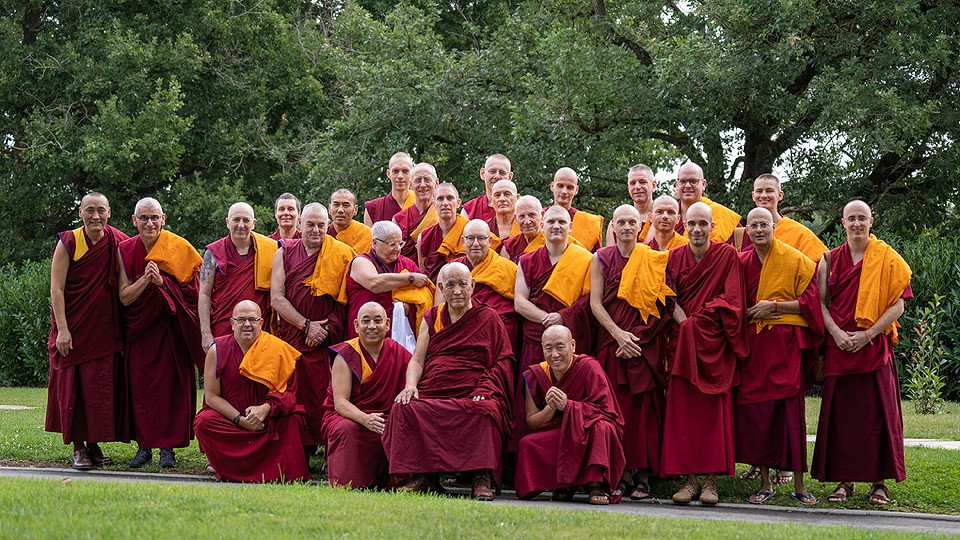
Group picture of sangha at Nalanda with Ganden Tripa Lobsang Tenzin. Sangha at Nalanda Monastery with Ganden Tripa Lobsang Tenzin, Geshe Jampel, and Geshe Gyaltsen, Nalanda Monastery, France, September 2019. Photo by Harald Weichhart. Also pictured: Attendant of Ganden Tripa, Vens. Sherab, Lektsok, Irene, Gendun, Sangpo, Choepel, Geshe Graham Woodhouse, Vens. Tenzin, Thekchog, Tharchin, Zopa, Tsultrim, Jamyang, Tsondru, Tenpa, Tendar, Thubten, Khunken, Tsultrim, Gendun, Zoksang, Gyaltsen, Ani Tenzin, and Ven. Raffa.
You can learn about Nalanda Monastery by visiting their website. Find the “Nalanda Monastery 40th Anniversary, Honouring Our Former Generations” videos and more on Nalanda Monastery’s YouTube channel.
FPMT.org and Mandala Publications brings you news of Lama Zopa Rinpoche and of activities, teachings, and events from 150 FPMT centers, projects, and services around the globe. If you like what you read, consider becoming a Friend of FPMT, which supports our work.
- Tagged: adrian feldmann, fpmt history, geshe jamphel, henri charpentier, jean-francois bergevin, john feuille, lama yeshe, lama zopa rinpche, nalanda monastery, stephan pende wormwood, ven. elisabeth drukier, ven. gyaltsen, ven. roger kunsang, ven. steve carlier, ven. tarchin, ven. tendar
27
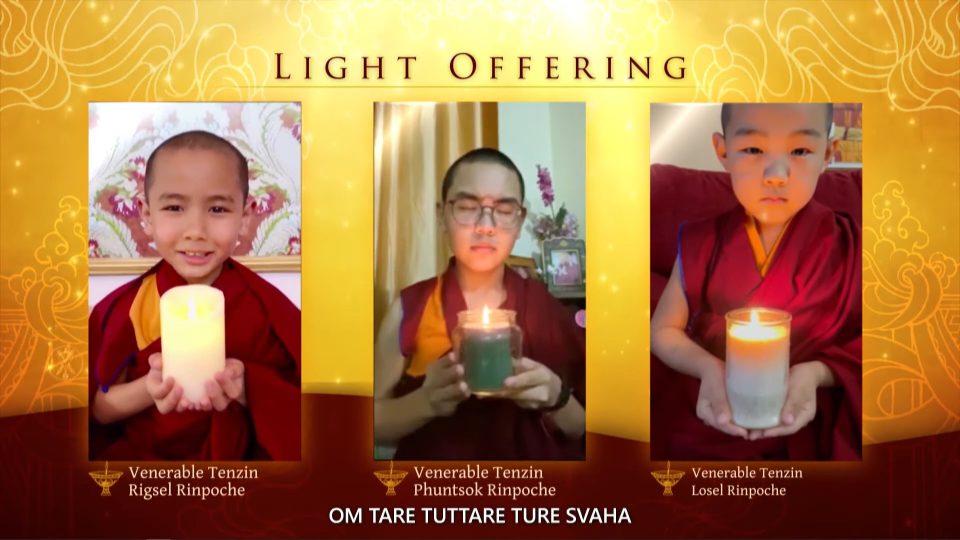
Screenshot of Light Offering Video created by the Vajrayana Buddhist Council of Malaysia, October 2021
The Vajrayana Buddhist Council of Malaysia, which is an association of Malaysian Tibetan Buddhist centers and organizations, has created a beautiful video of advice and prayers, featuring His Holiness the Dalai Lama, the Ganden Tripa, Lama Zopa Rinpoche, and many other high lamas from the various Tibetan Buddhist traditions.
The VBCM, of which the Malaysian FPMT centers are members, made a request to its teachers to pray for the victims of COVID-19 and give advice to Malaysians, who were facing many challenges.
This video is a result of VBCM’s request and includes light offerings and advice from a dozen precious teachers. In addition, many venerable ordained sangha and lay students also make light offerings. There are also many expressions of gratitude for the COVID support organized by VBCM members.
On this auspicious day of Lhabab Duchen, we invite you to please enjoy this video of light offerings, advice, and prayers from so many precious teachers:
https://youtu.be/qGbYNRsMqsk
You can learn more about the FPMT centers in Malaysia by visiting their respective websites.
FPMT.org and Mandala Publications brings you news of Lama Zopa Rinpoche and of activities, teachings, and events from over 160 FPMT centers, projects, and services around the globe. If you like what you read, consider becoming a Friend of FPMT, which supports our work.
- Tagged: covid-19, light offerings, malaysia, video, video short
25
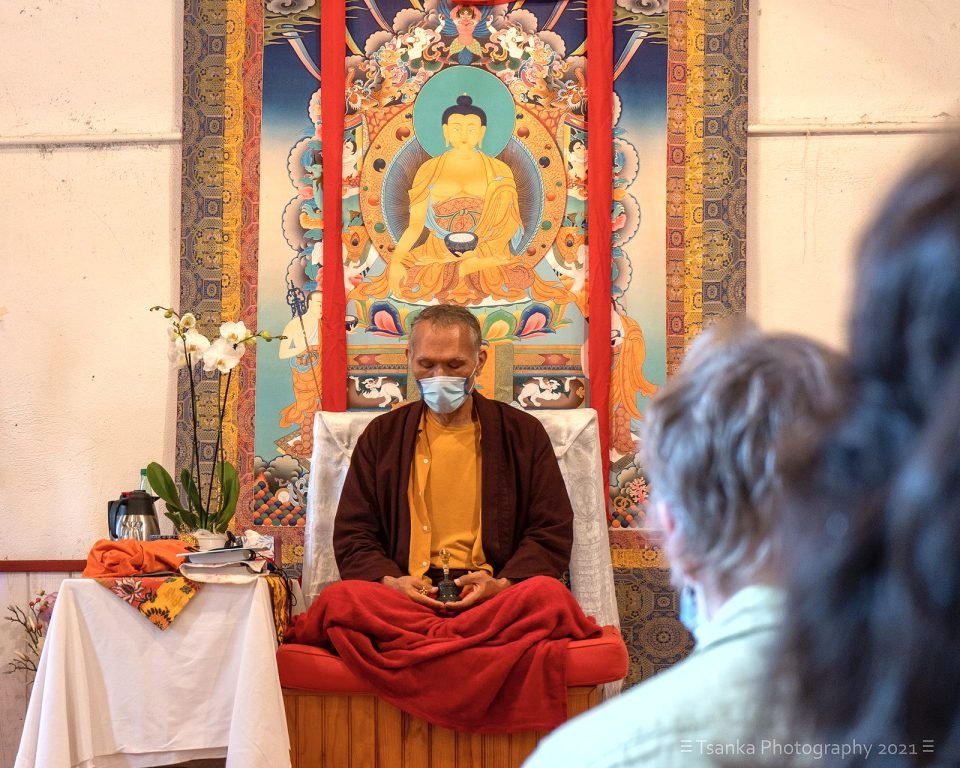
Yangsi Rinpoche during the Vajrasattva retreat at Institut Vajra Yogini, France, August 2021. Photo by Tsanka Petkova.
In August 2021, Institut Vajra Yogini (IVY), an FPMT center in southeastern France, hosted a ten-day Vajrasattva retreat with Yangsi Rinpoche. Christian Charrier, the spiritual program coordinator at IVY, shared this story of the retreat.
In 2020, due to the COVID-19 pandemic and the safety measures decided by the government, we could not, as usual, host Yangsi Rinpoche for our yearly Vajrasattva retreat at Institut Vajra Yogini. Still the conditions were not so bad, since we managed to organize this retreat online with Rinpoche giving talks every day from a remote location.
But this year, our repeated prayers and aspirations had proved successful! Rinpoche, out of kindness, accepted our invitation to come in person to visit us. After a few months of suspense, not knowing for sure if he would be able to travel to France from the United States, we were delighted to see him come out of the director’s car after arriving at IVY and greet all the people waiting in line to welcome him with colorful khatas, broad smiles, and “thanks” on their lips. This was August, the sun was bright, and we all had masks!
As soon as Rinpoche entered the chateau, he went straight to the gompa to do full-length prostrations in front of Geshe Tengye’s reliquary stupa. With tears pearling in our eyes, we felt so fortunate and grateful that Rinpoche had come from such a far distance and was with us in his “real” physical form to help us purify our negativities.
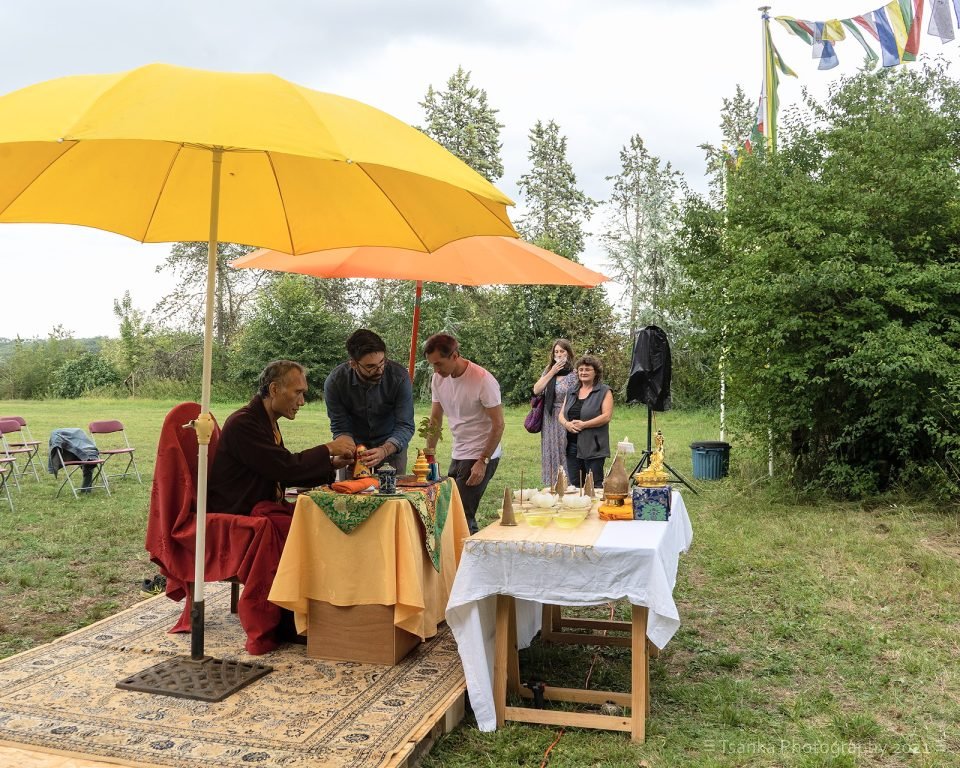
Yangsi Rinpoche with students at Institut Vajra Yogini, France, August 2021. Photo by Tsanka Petkova.
The next day, Rinpoche started the retreat as usual by giving Vajrasatta initiation and practice instructions. The sessions were structured as he advised, starting with prostrations to the Thirty-Five Buddhas of Confession and supplemented with Lama Tsongkhapa’s Guru Yoga. As additional methods for transforming the mind during this Vajrasattva retreat, Rinpoche had us recite the Song of the Four Mindfulnesses, Calling the Guru from Afar, and stanzas on emptiness from the Wheel of Sharp Weapons.
Those who were not able to do the whole retreat or had not been tested for COVID could follow some sessions outside on the lawn. They could also join the evening events, which were organized every other day, and attend other practices such as reciting the Praises to the Twenty-one Taras, doing fumigation (smoke purification) practice, and receiving the lung of the Diamond Cutter Sutra from Rinpoche.
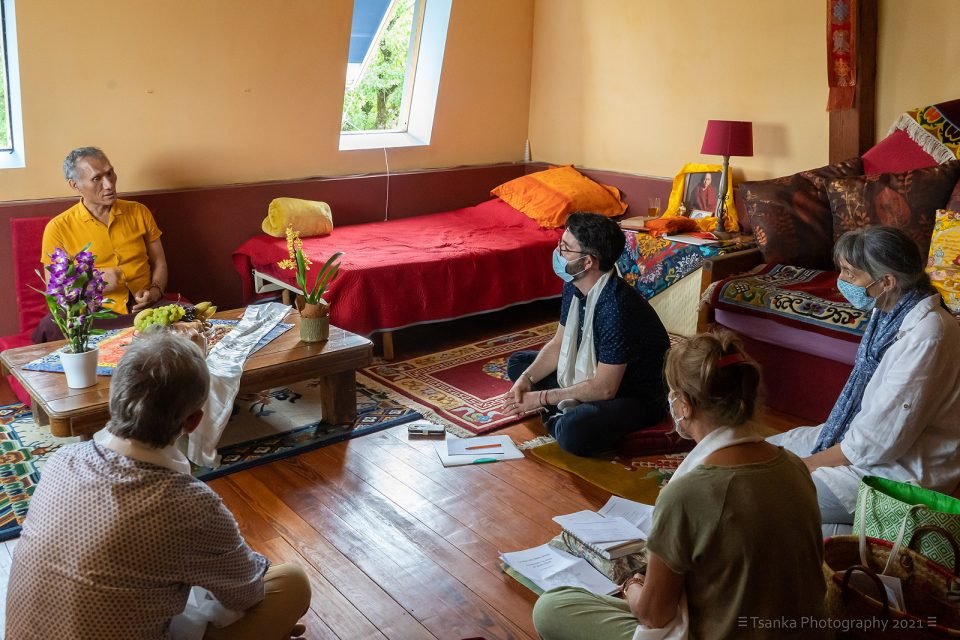
Yangsi Rinpoche with students at Institut Vajra Yogini, France, August 2021. Photo by Tsanka Petkova.
On the first day of the retreat, Rinpoche had suggested that we take notes of whatever insights on emptiness and of other experiences we had to be presented during a performance planned for the close of the retreat. Many people wanted to participate, and it was challenging to integrate everybody’s ideas and present them in a coherent and playful form. After a few rehearsals, it turned out that “COVID” and “emptiness” (“vide” in French) would make a tempting play on words and help us turn difficulties into humor. Several participants performed little sketches, accompanied by music, songs, duets, dances, scarfs, bubbles, … and much laughter.
In the same way that Rinpoche had led us to the open stage in the shade of the oak trees, he brought us all into bright light around the white stupa, where all the participants could fit in a complete circle. Finally, right in front of the main door, Rinpoche sang with us a homemade song created for the occasion, called “Tong pa nyi Blues.” Indeed it chased our blues away, giving us confidence that the lama is always at our heart’s door, ready to come in … whenever we invite him.
Learn more about Institut Vajra Yogini online.
FPMT.org and Mandala Publications brings you news of Lama Zopa Rinpoche and of activities, teachings, and events from over 160 FPMT centers, projects, and services around the globe. If you like what you read, consider becoming a Friend of FPMT, which supports our work.
- Tagged: institut vajra yogini, yangsi rinpoche
5
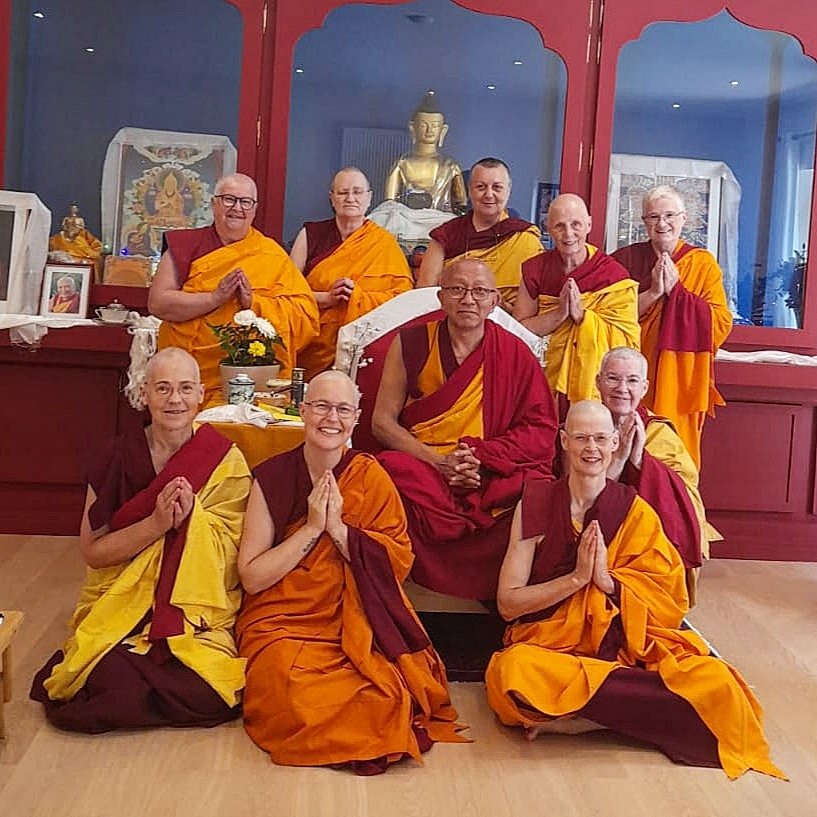
Abbot Geshe Loden with nuns in the Monastère Dorje Pamo gompa, Fiac, France, 2021
Monastère Dorje Pamo is a monastery for FPMT nuns. It is located in southeastern France near Institut Vajra Yogini and Nalanda Monastery. Ven. Chantal Tenzin Dekyi, coordinator of the monastery, shares this update:
Lama Yeshe and Lama Zopa Rinpoche, who together founded the FPMT organization, have both explained that the continuity of the teachings of the Buddha depend on the sustainability of the Sangha, which is the community of monks and nuns. They have advised that it is important, once ordained, to be able to live in a place that brings together the best conditions for studying and practicing Dharma, living in harmony, and taking care of each other.
Monastère Dorje Pamo aspires to be such a place.
The property that houses the monastery was donated in 2016 by a volunteer who was involved at Institut Vajra Yogini in the early eighties. After quite extensive renovation works on the building, three nuns took up residence during autumn 2018. They were myself, Chantal Tenzin Dekyi, in the role of project coordinator; Ven. Losang Dekyi, who since has moved to O.Sel.Ling Centro de Retiros in Spain and has done a long retreat; and Peggy van der Hoogen, a postulant from the Netherlands. Following our settling in, there has been a lot of comings and goings of visitors, until more recently when the community stabilized.
Indeed, in December 2019, Béatrice, a long-time FPMT student, came to join us. Then a year later, Inge arrived from the Netherlands. Both stayed as aspirants preparing for ordination.
This year, on the auspicious day of July 14, 2021—which was Chökhor Duchen, the Wheel Turning Day that commemorates the First Teaching of the Buddha on the four noble truths—the ordinations finally occurred. Geshe Gyaltsen from Nalanda Monastery conferred novice ordination on three new nuns and three new monks.
Therefore, our two aspirants, Béatrice and Inge, became Ven. Gyaltsen Chökyi and Ven. Gyaltsen Palmo, in addition to Sophie, a student of Nalanda Monastery, now Ven. Gyaltsen Chötso. There are now altogether four nuns residing at the Dorje Pamo. Two other French nuns are regular visitors: Ven. Detchen, who is taking care of her sick father, and Ven. Lhamo, who came out of a long retreat in autumn 2020 and is currently visiting friends and family.
There are also several nuns who are part of our community although not as residents. They join us for regular pujas, special events, and to help with service. Ven. Tenzin Pema is our accountant. Some of the nuns take turns in guiding meditations and participating in our program. The program has been very reduced due to the pandemic’s restrictions. However, we continue to offer weekly meditations and Tara pujas online through Zoom. Some of our friends are glad to stay connected in this way.
In addition, on the auspicious full-moon day of July 24, we welcomed our abbot, Geshe Tenzin Loden, who was appointed by Lama Zopa Rinpoche. The enthronement was a very joyous celebration day. After inviting Geshe-la to the gompa, we recited Requests and Homage to the Sixteen Arhats, who are specially connected to the Sangha. The Sixteen Arhats, also known as the Sixteen Elders, were personally chosen by Shakyamuni Buddha, who asked them to remain in the world to maintain the Dharma. They vowed to stay until the time of the future Buddha Maitreya in order to help the Dharma flourish.
Geshe-la gave an inspiring talk about the importance and role of Sangha in preserving and developing the Dharma; the importance of training in ethics as the basis of all trainings; and the importance of harmony in monastic community as the necessary condition for temporal and ultimate happiness. And that is exactly what we are trying to implement.
After these happy events, our community life is taking shape. We are settling in a rhythm of joint, as well as personal, practice, study, and offering service to the community. And we are preparing for the expansion of our program and resources for our community to grow in harmony among ourselves and with the environment.
You can learn more about Monastère Dorje Pamo on their website, MonastereDorjePamo.org.
FPMT.org and Mandala Publications brings you news of Lama Zopa Rinpoche and of activities, teachings, and events from over 160 FPMT centers, projects, and services around the globe. If you like what you read, consider becoming a Friend of FPMT, which supports our work.
- Tagged: dorje pamo monastery, monastere dorje pamo
- Home
- News/Media
- Study & Practice
- About FPMT Education Services
- Latest News
- Programs
- New to Buddhism?
- Buddhist Mind Science: Activating Your Potential
- Heart Advice for Death and Dying
- Discovering Buddhism
- Living in the Path
- Exploring Buddhism
- FPMT Basic Program
- FPMT Masters Program
- FPMT In-Depth Meditation Training
- Maitripa College
- Lotsawa Rinchen Zangpo Translator Program
- Universal Education for Compassion & Wisdom
- Online Learning Center
- Prayers & Practice Materials
- Overview of Prayers & Practices
- Full Catalogue of Prayers & Practice Materials
- Explore Popular Topics
- Benefiting Animals
- Chenrezig Resources
- Death & Dying Resources
- Lama Chopa (Guru Puja)
- Lama Zopa Rinpoche: Compendium of Precious Instructions
- Lama Zopa Rinpoche: Life Practice Advice
- Lama Zopa Rinpoche Practice Series
- Lamrim Resources
- Mantras
- Prayer Book Updates
- Purification Practices
- Sutras
- Thought Transformation (Lojong)
- Audio Materials
- Dharma Dates – Tibetan Calendar
- Translation Services
- Publishing Services
- Teachings and Advice
- Find Teachings and Advice
- Lama Zopa Rinpoche Advice Page
- Lama Zopa Rinpoche: Compendium of Precious Instructions
- Lama Zopa Rinpoche Video Teachings
- ༧སྐྱབས་རྗེ་བཟོད་པ་རིན་པོ་ཆེ་མཆོག་ནས་སྩལ་བའི་བཀའ་སློབ་བརྙན་འཕྲིན།
- Podcasts
- Lama Yeshe Wisdom Archive
- Buddhism FAQ
- Dharma for Young People
- Resources on Holy Objects
- Ways to Offer Support
- Centers
- Affiliates Area
- Teachers
- Projects
- Charitable Projects
- Make a Donation
- Applying for Grants
- News about Projects
- Other Projects within FPMT
- Support International Office
- Projects Photo Galleries
- Give Where Most Needed
- FPMT
- Shop
Translate*
*powered by Google TranslateTranslation of pages on fpmt.org is performed by Google Translate, a third party service which FPMT has no control over. The service provides automated computer translations that are only an approximation of the websites' original content. The translations should not be considered exact and only used as a rough guide.It is necessary to help others, not only in our prayers, but in our daily lives. If we find we cannot help others, the least we can do is to not harm them.







